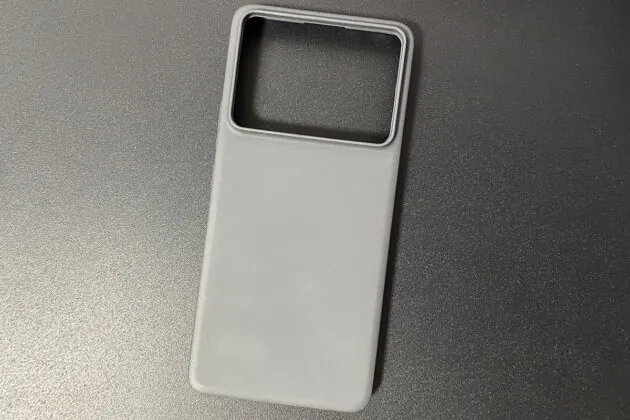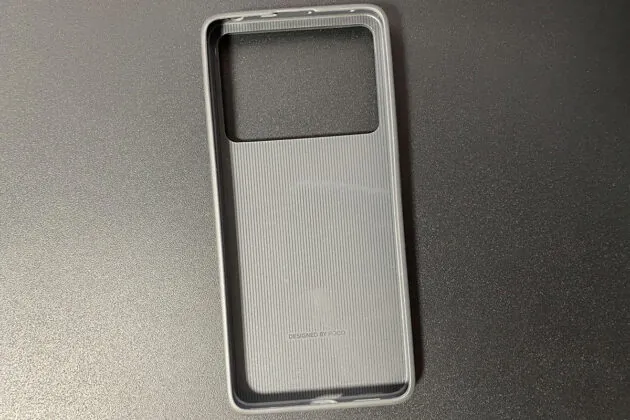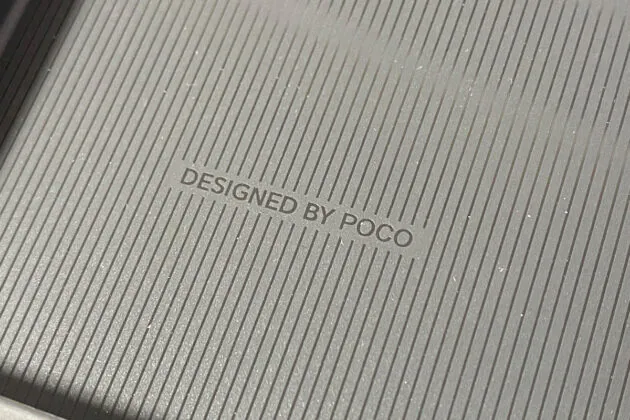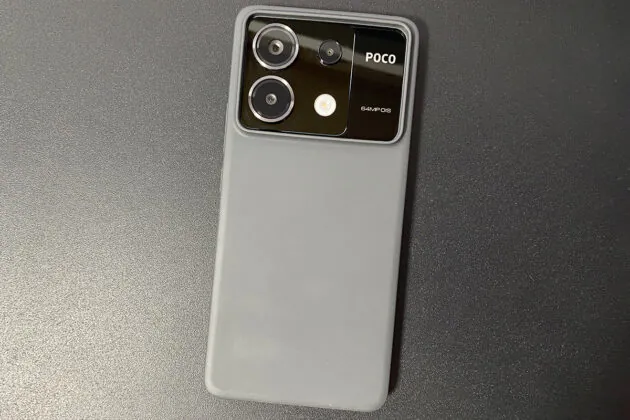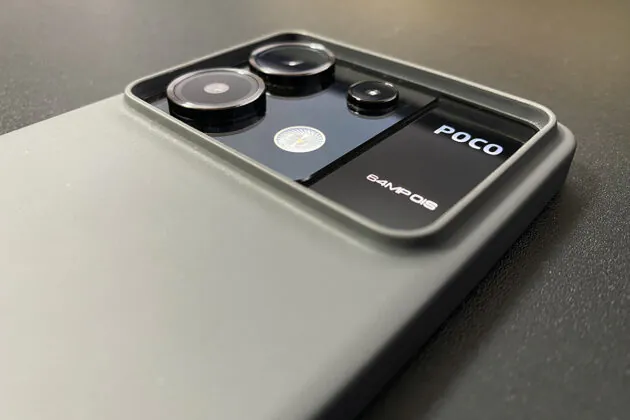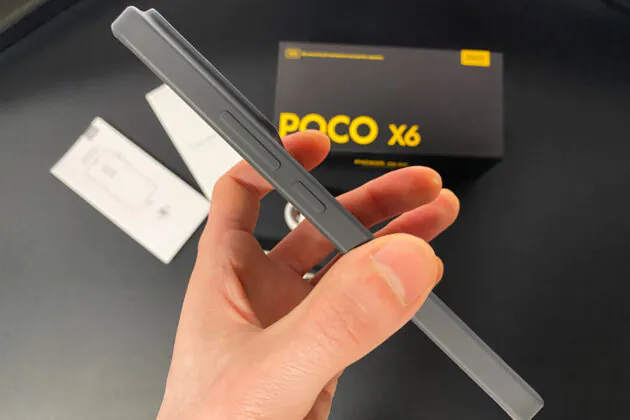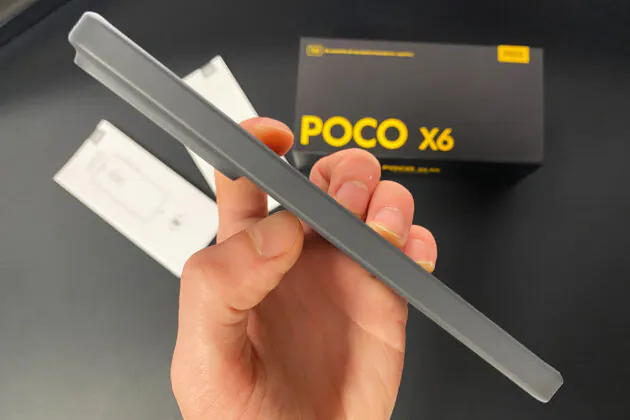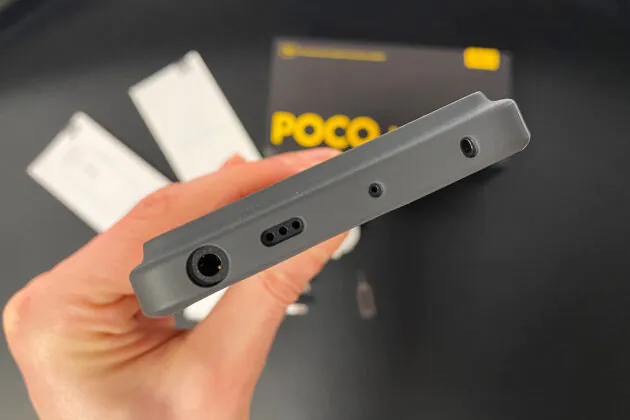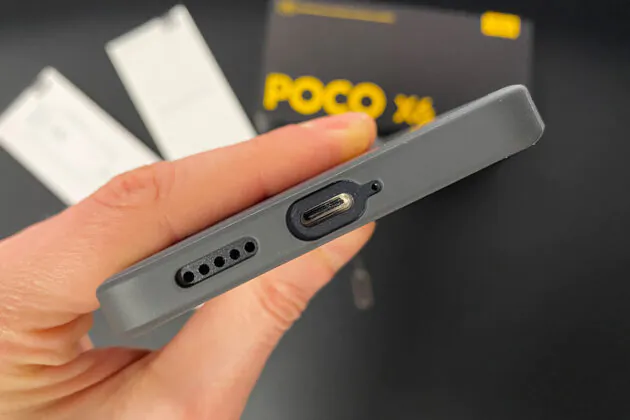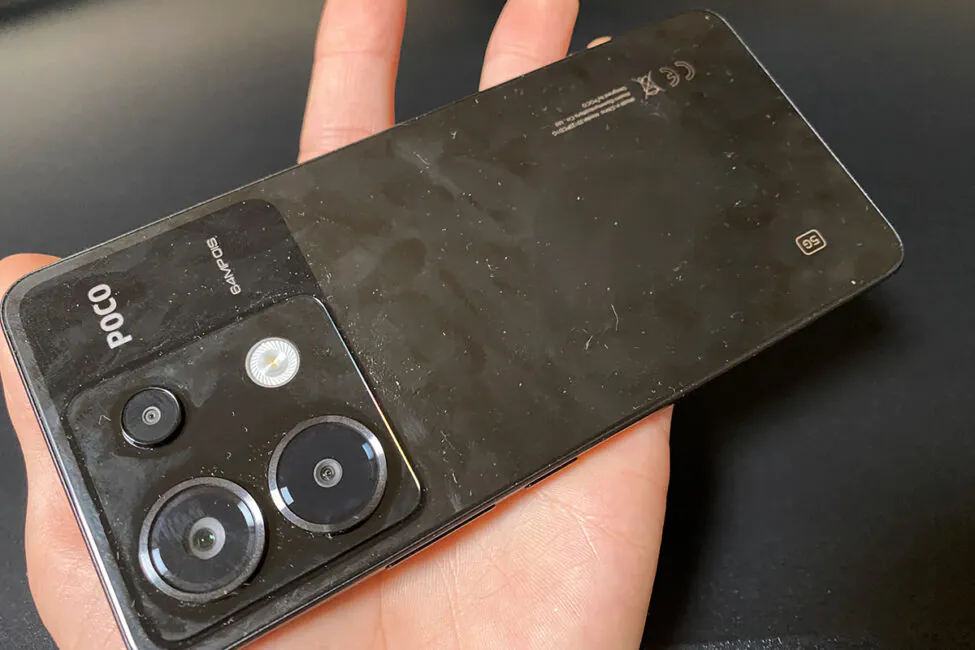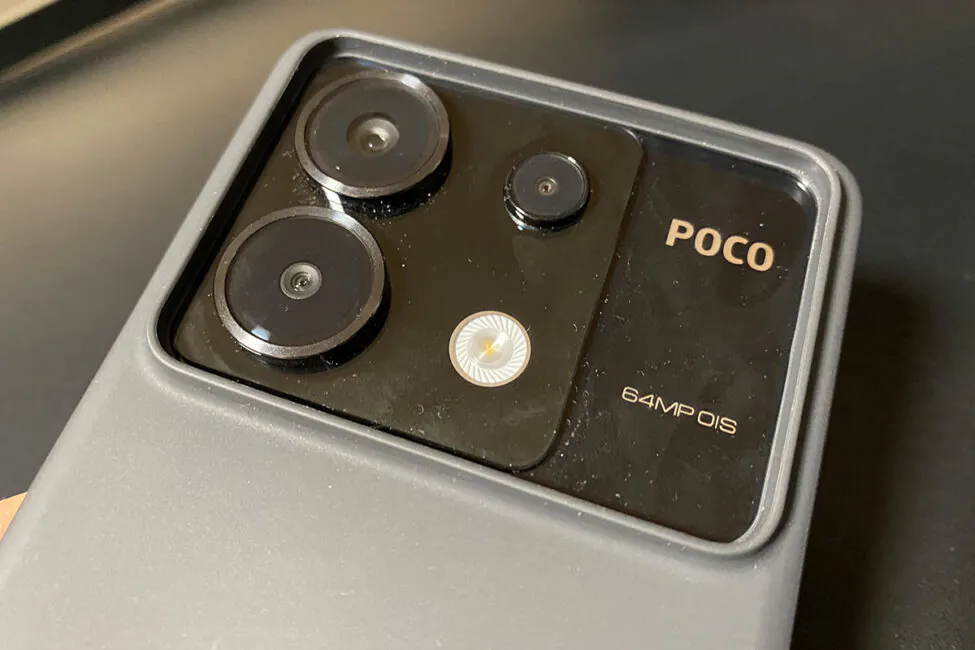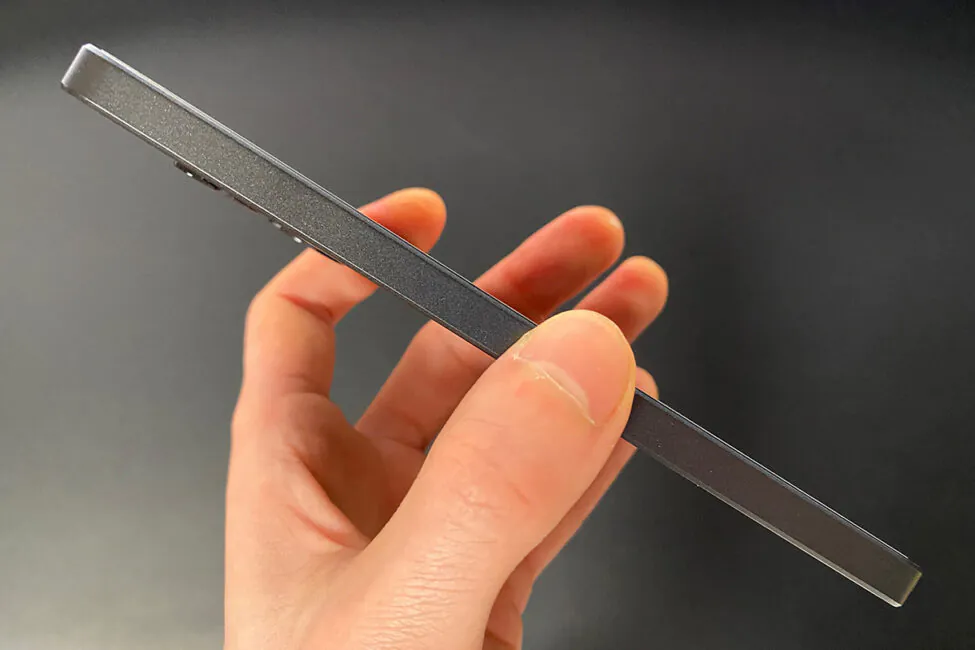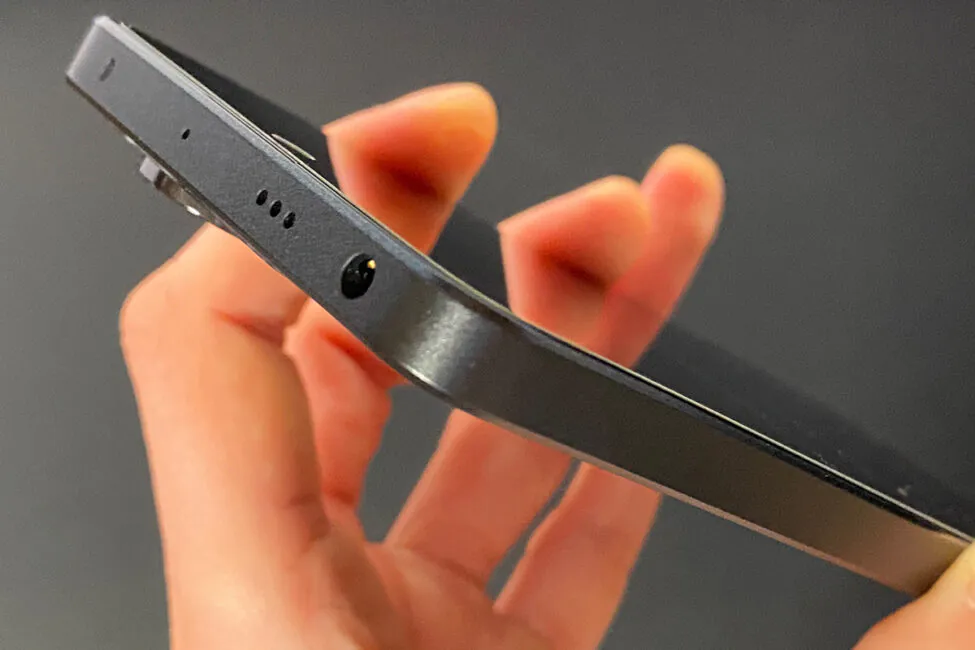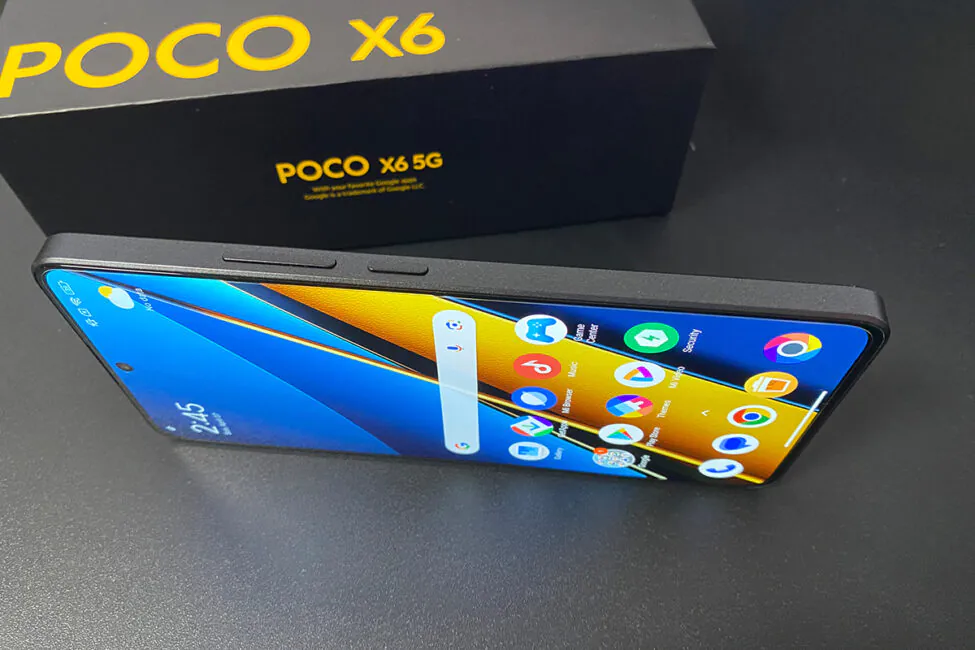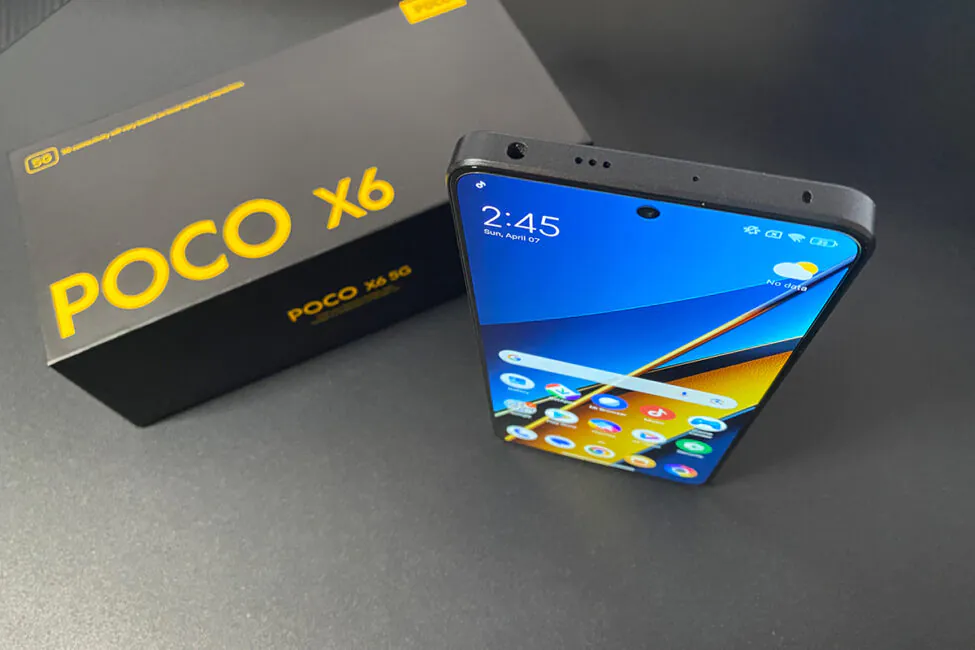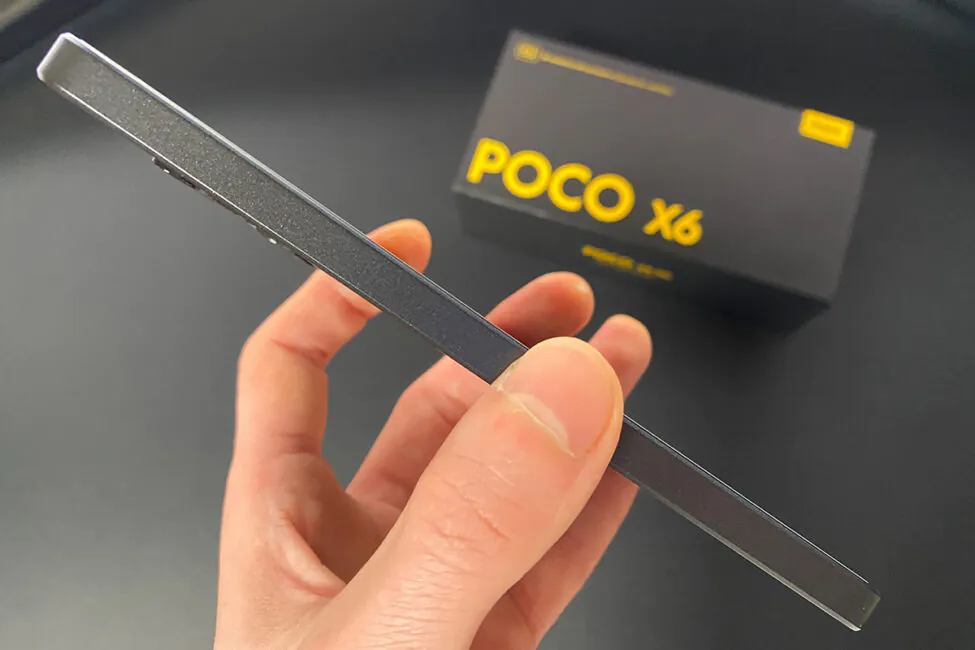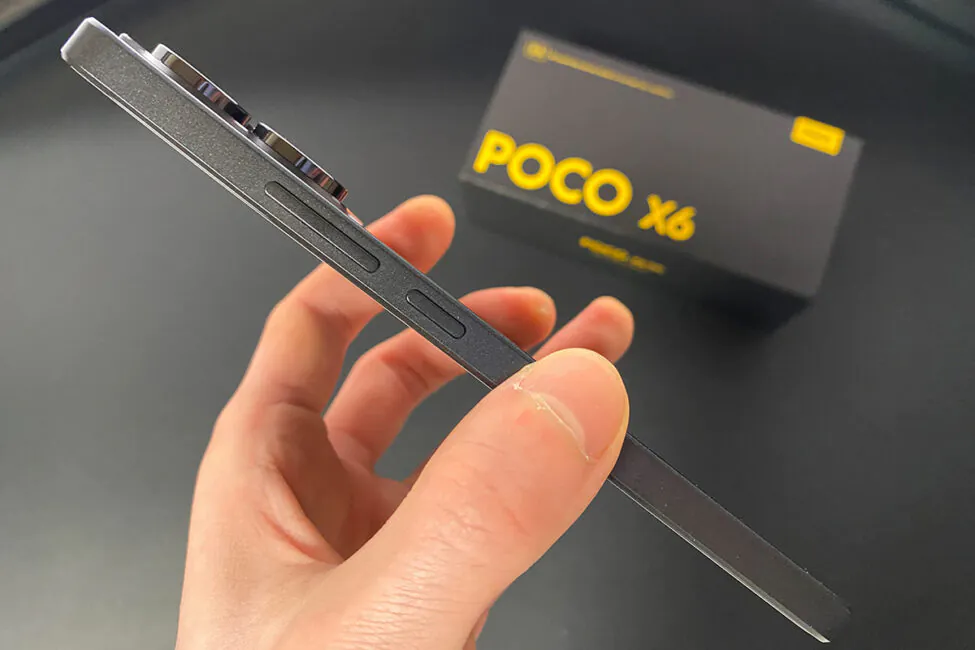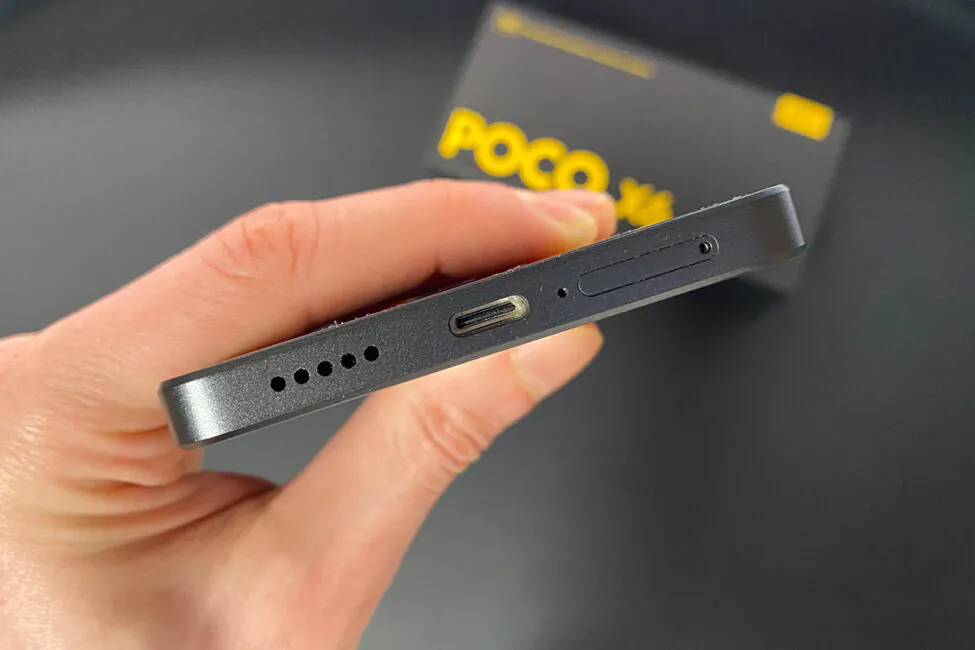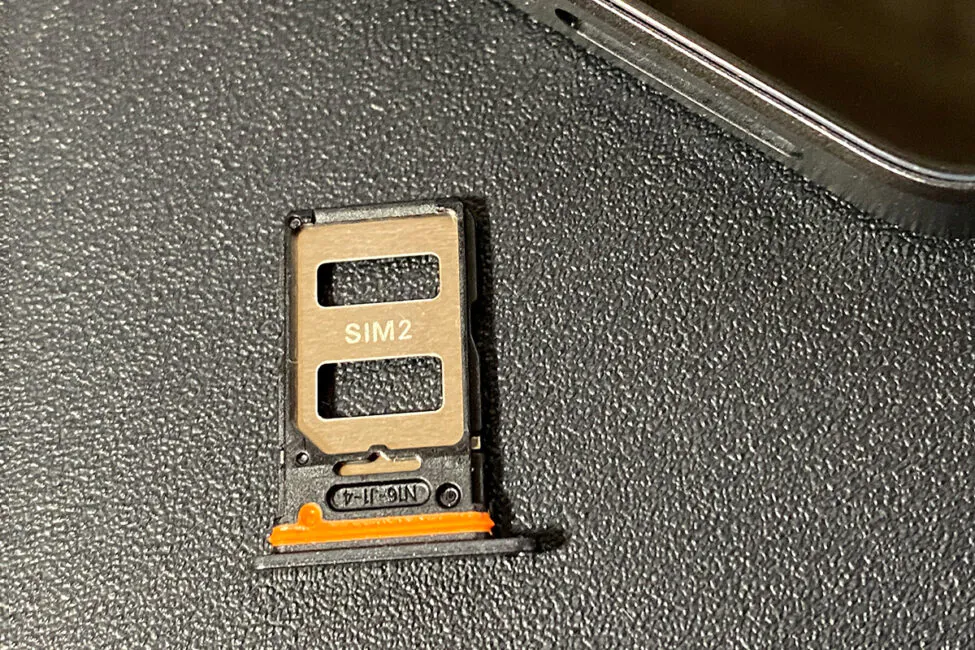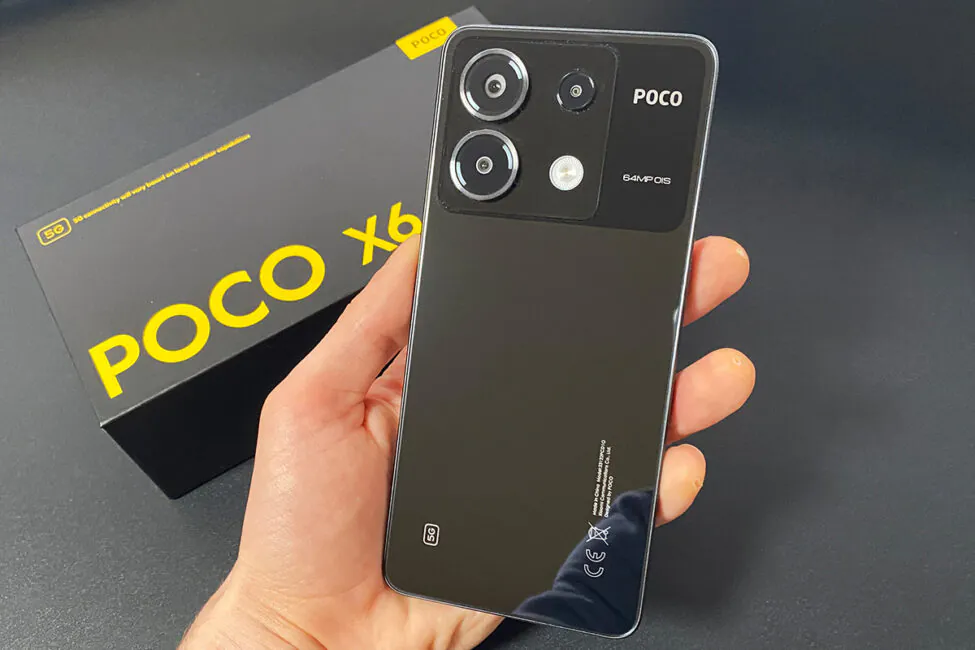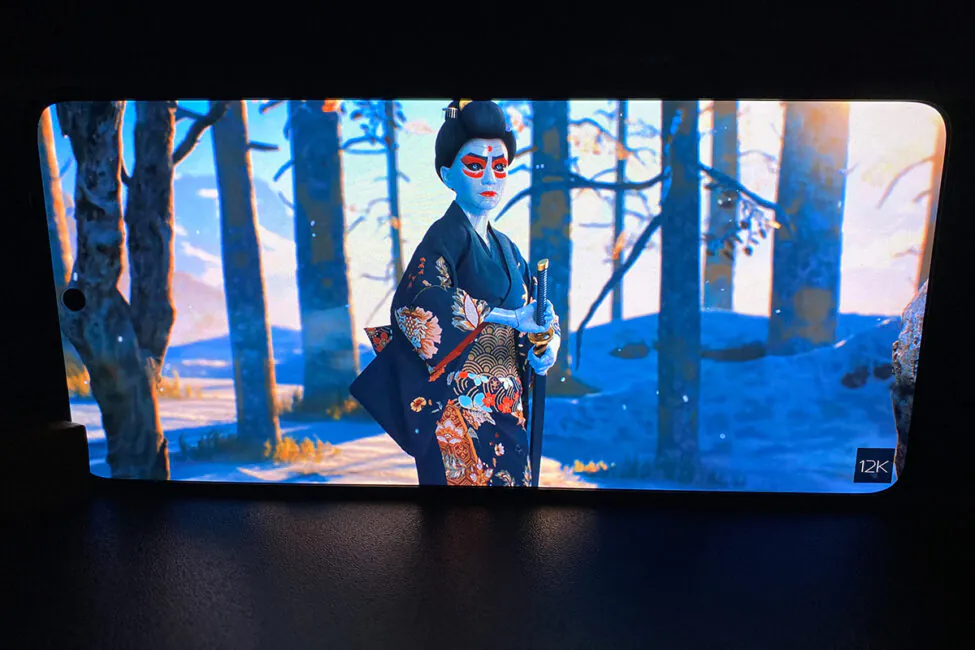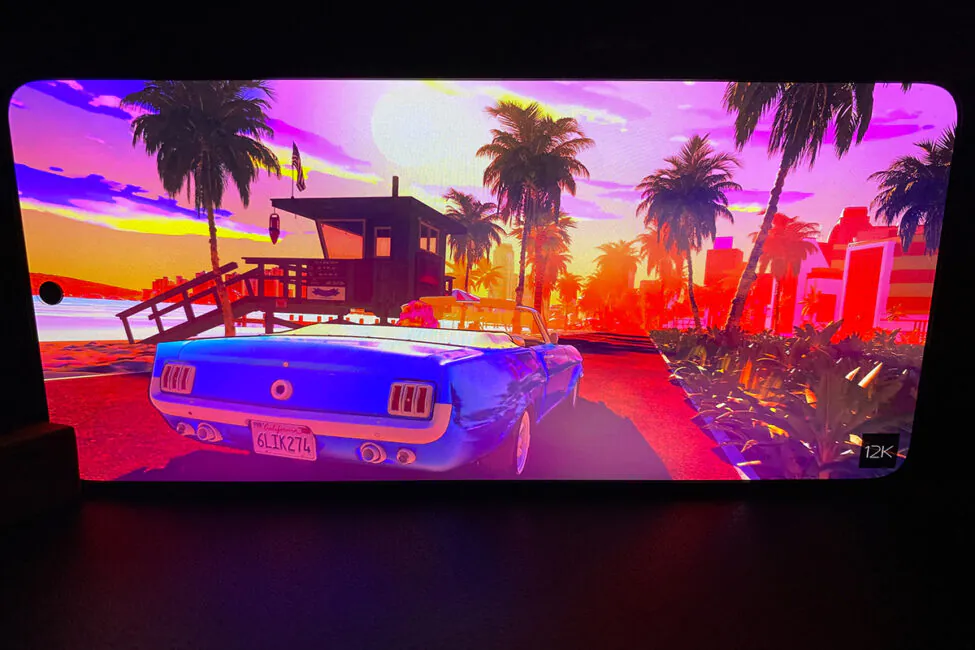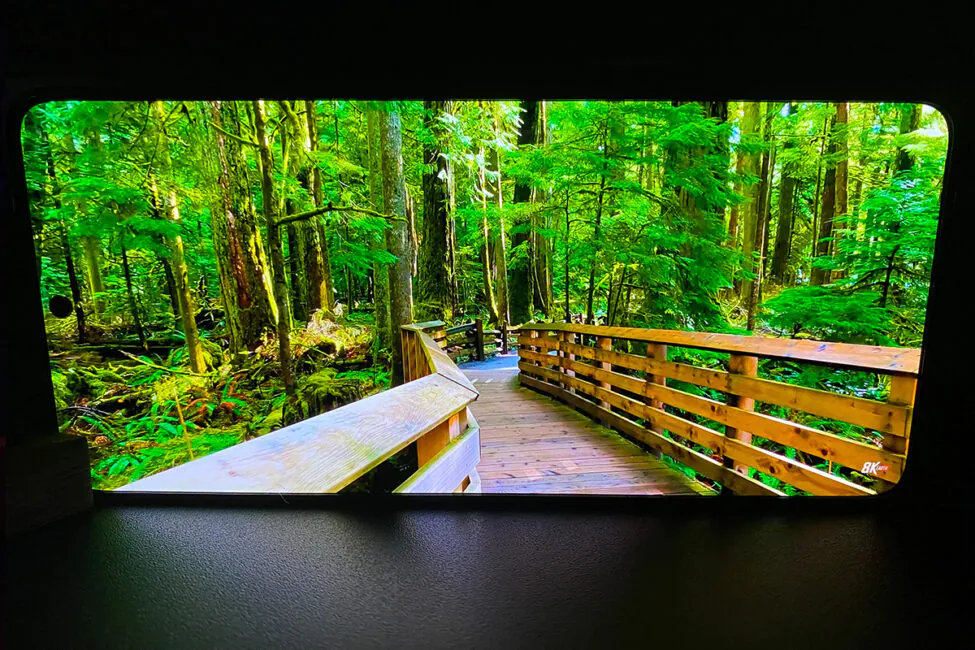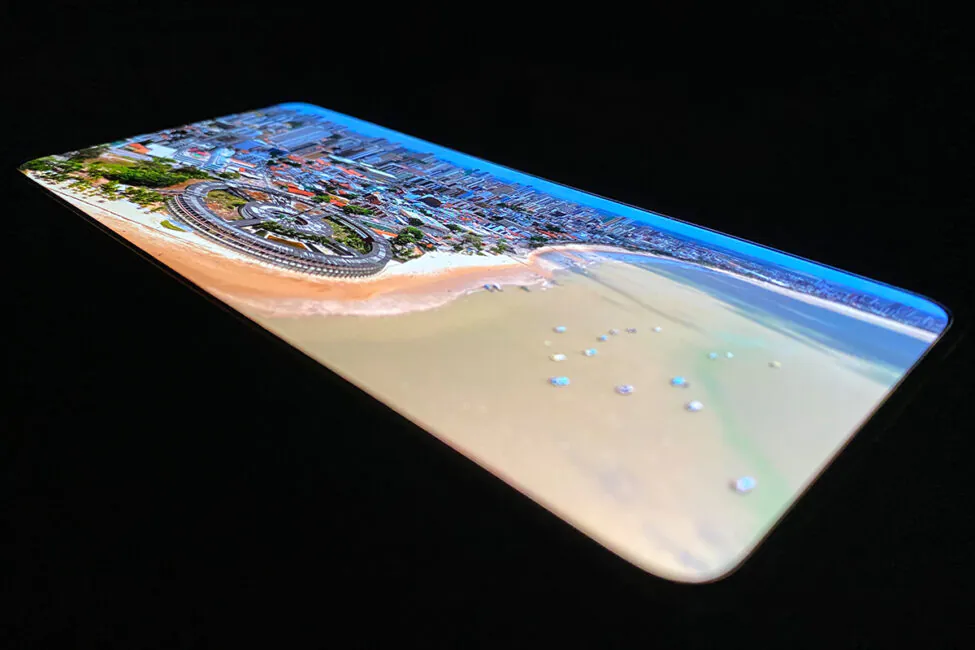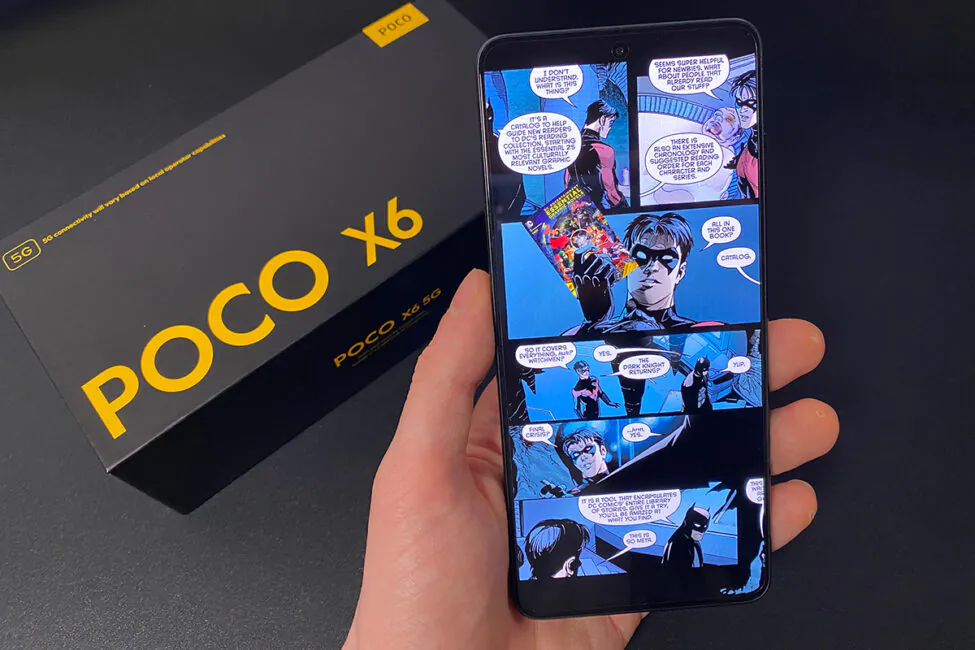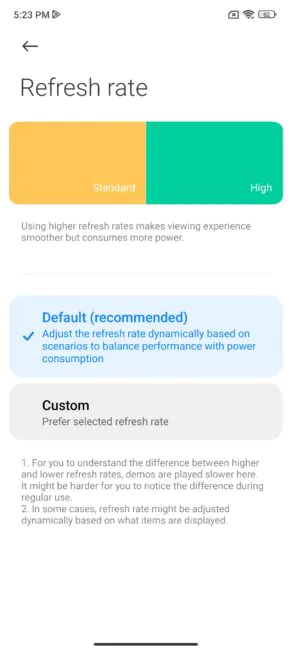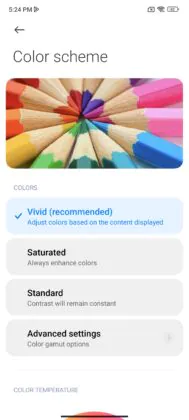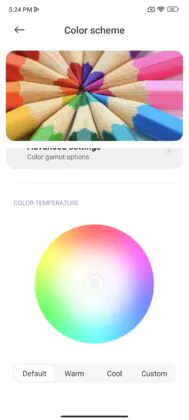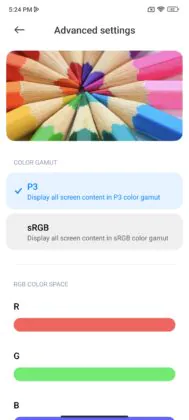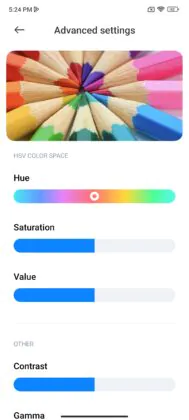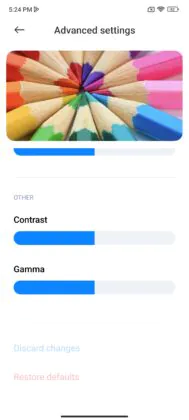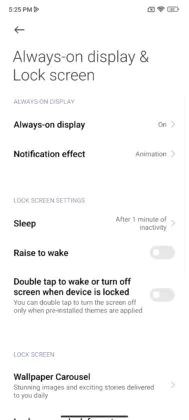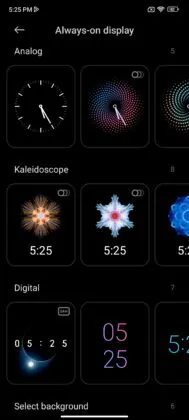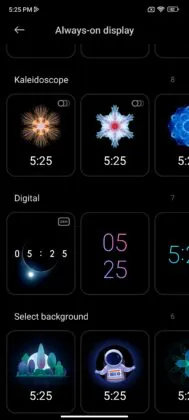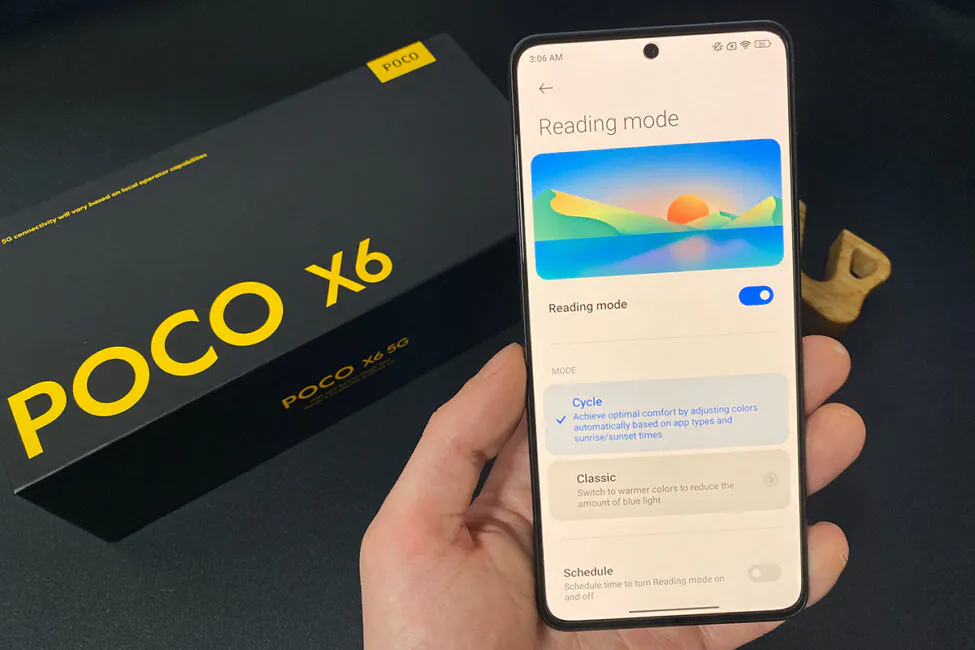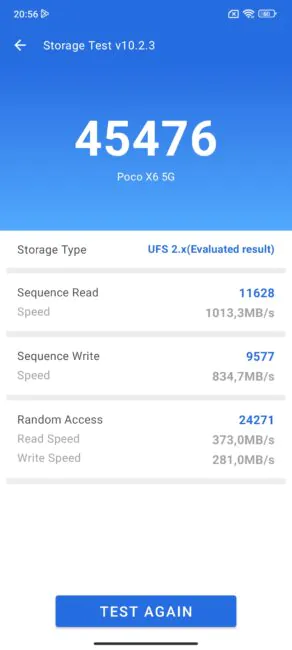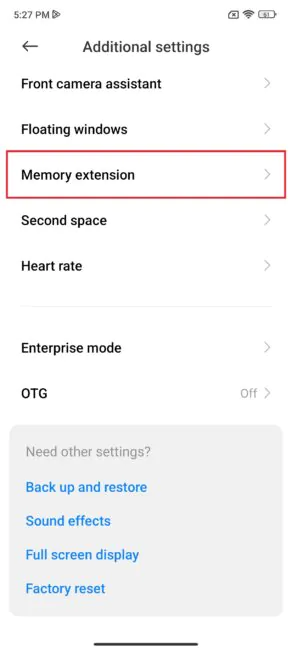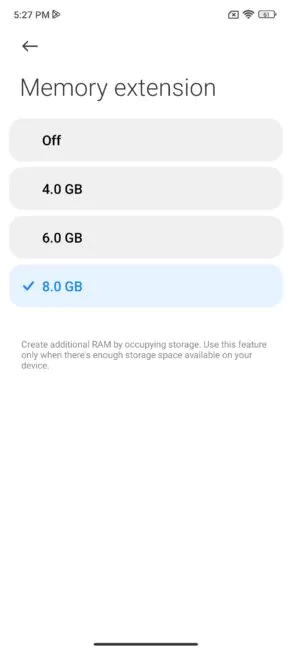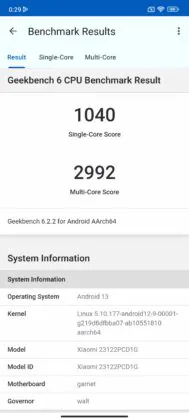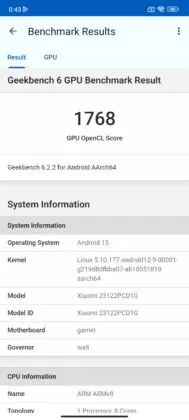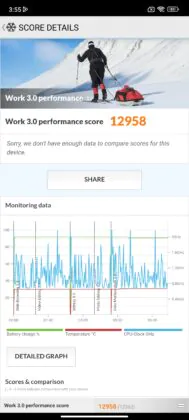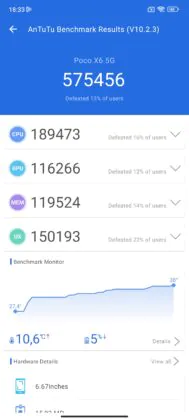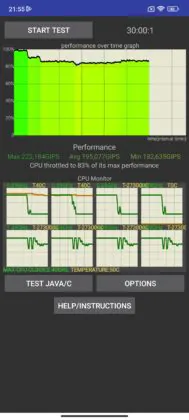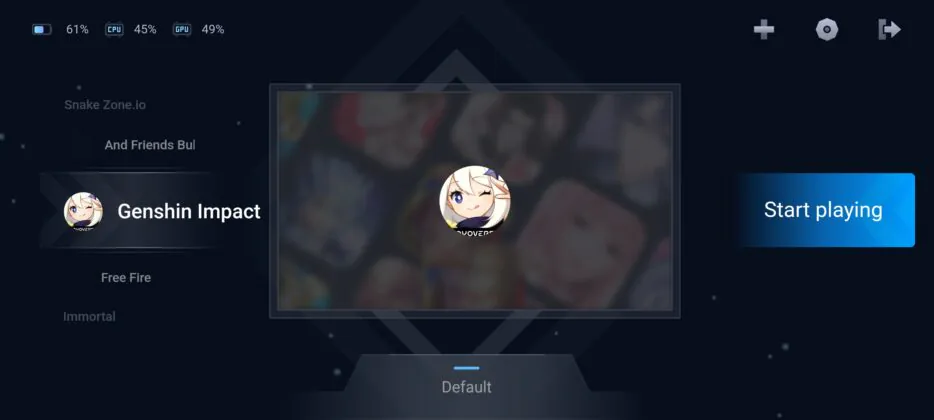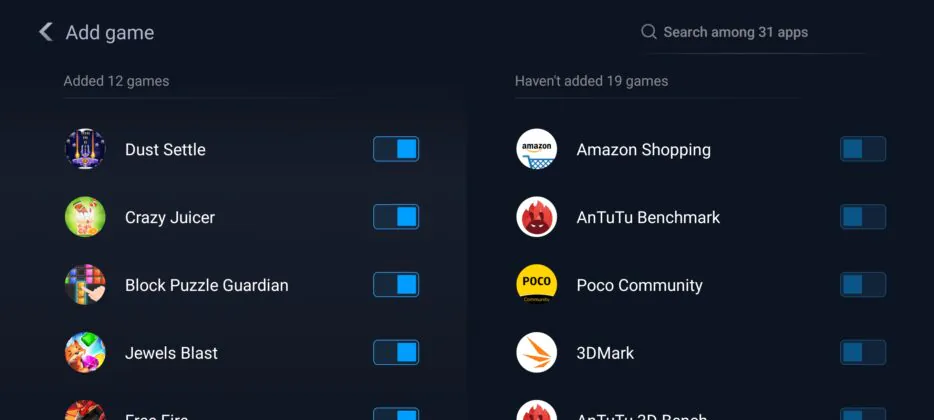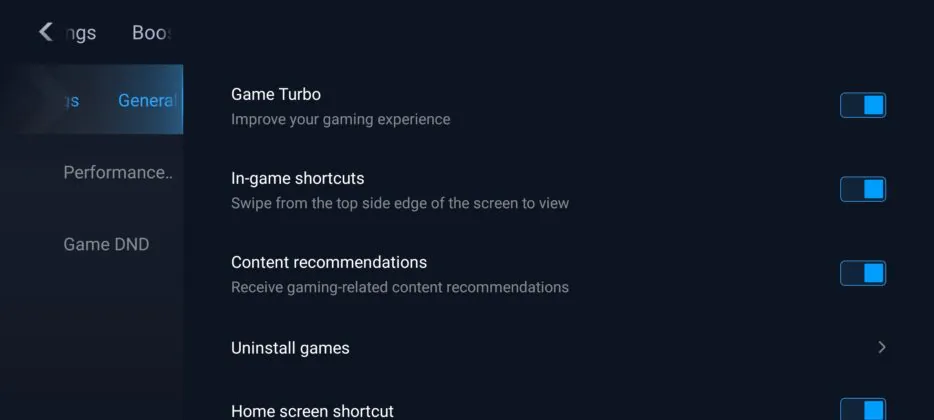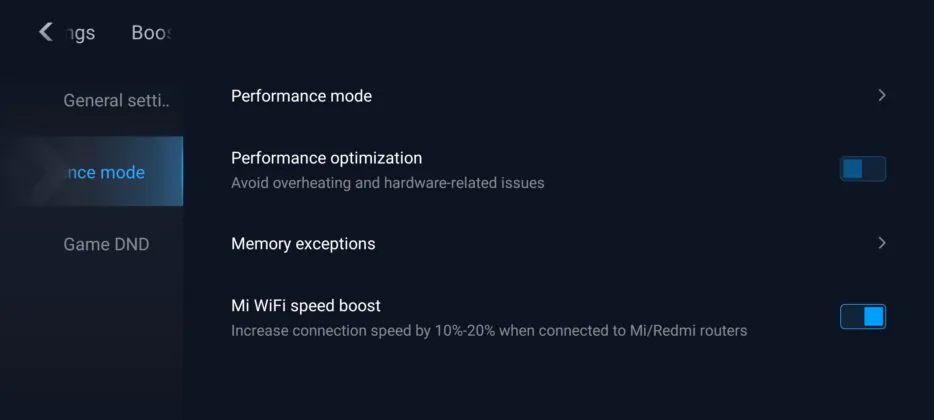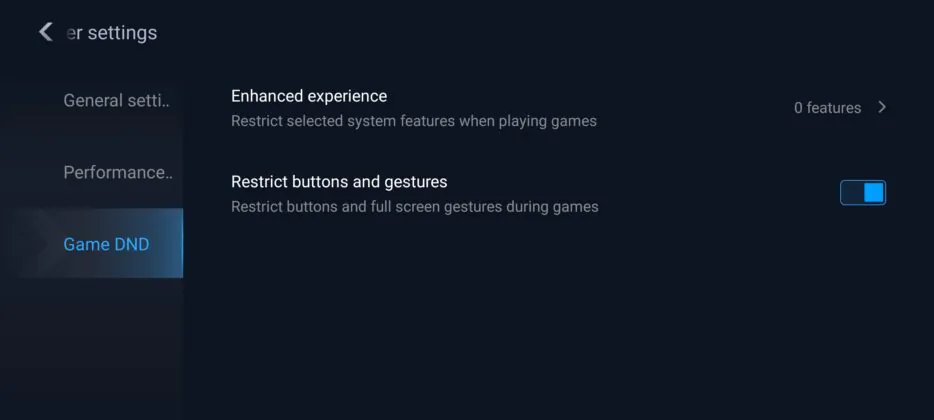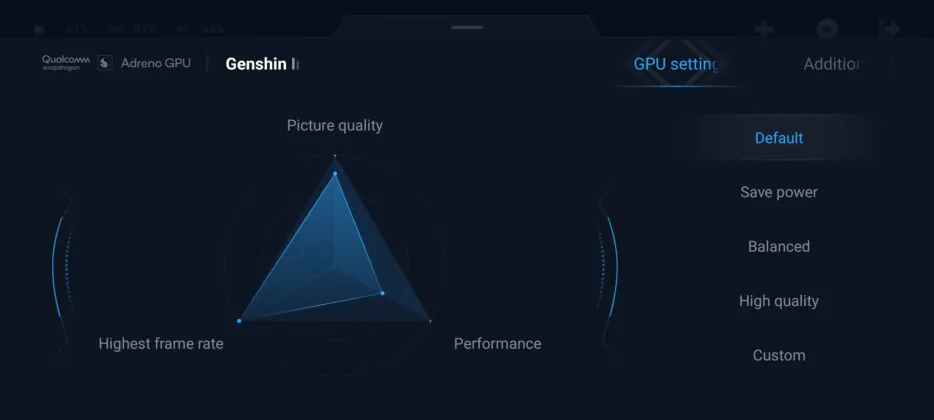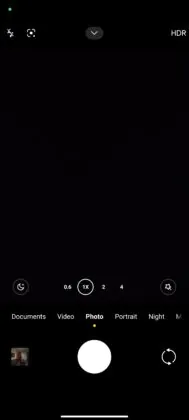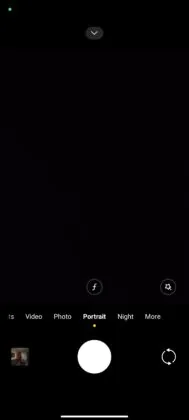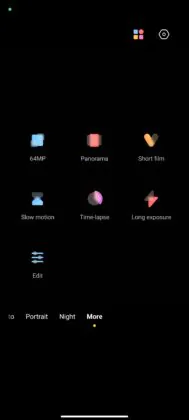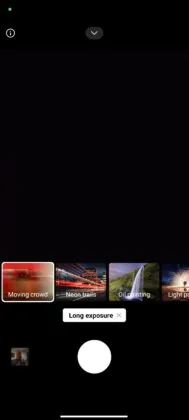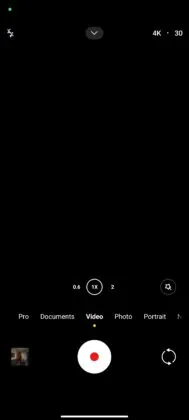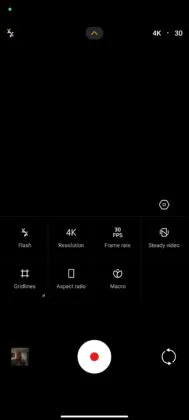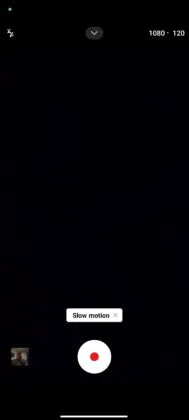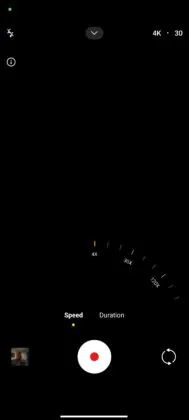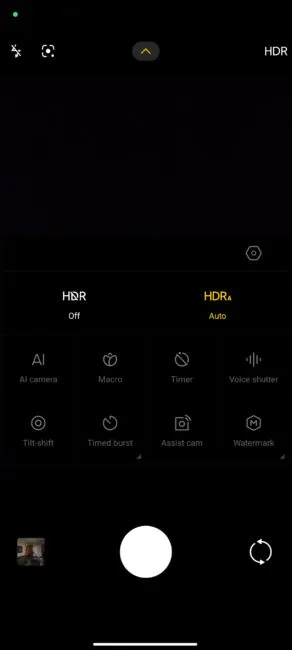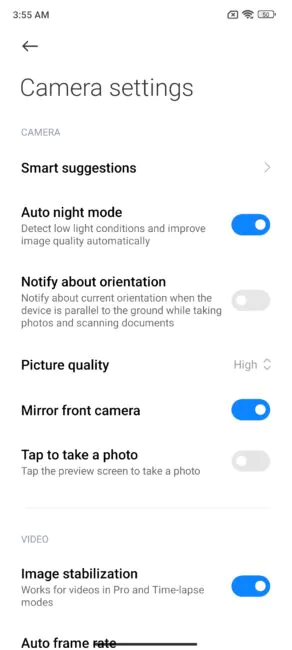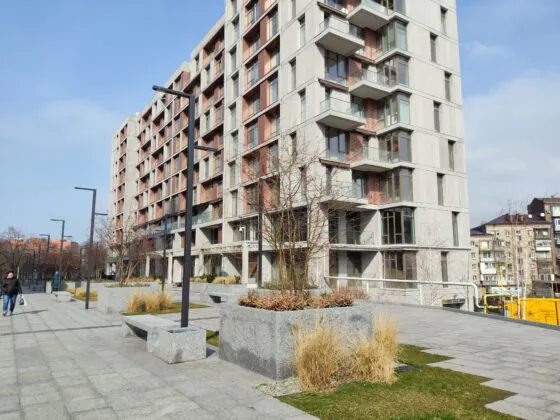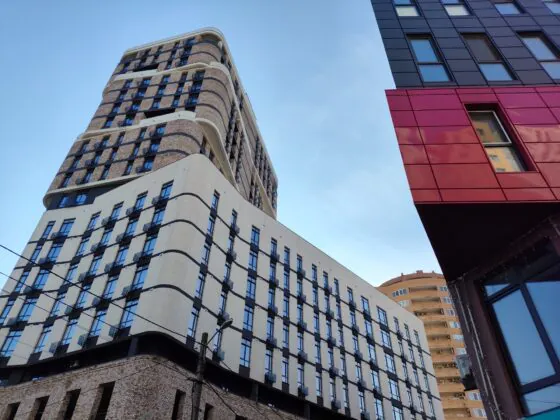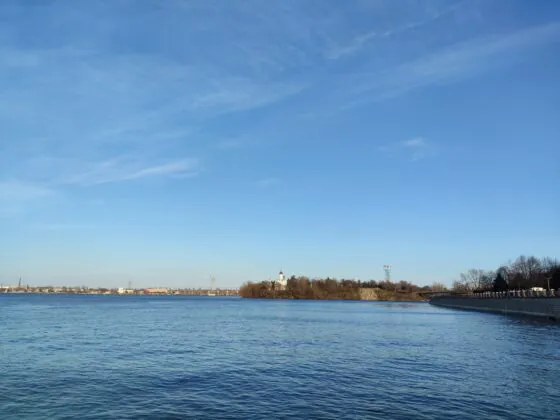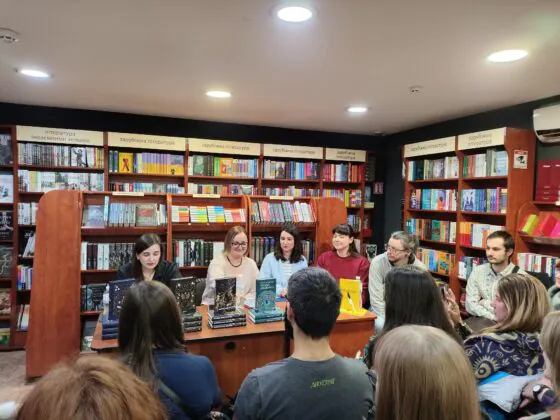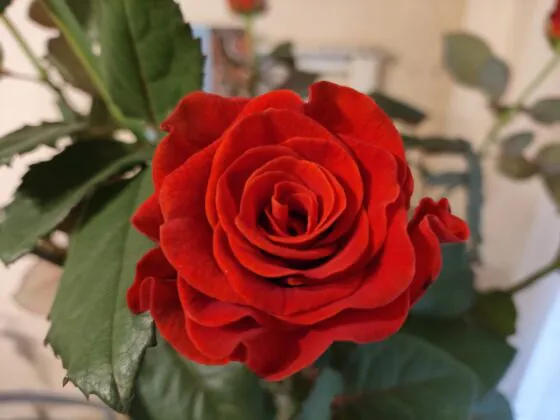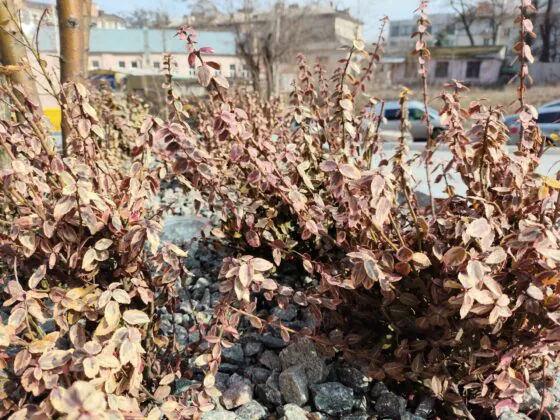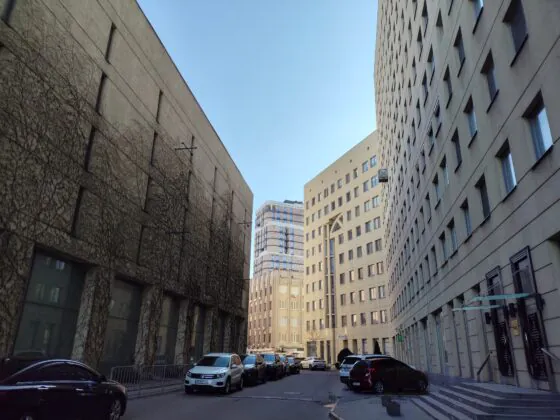© ROOT-NATION.com - Use of content is permitted with a backlink.
Recently, we reviewed the POCO X6 Pro 5G. Today, I want to introduce you to its younger sibling — the POCO X6 5G. As the name suggests, this is a more simplified and affordable version of the smartphone. Like its older brother, the POCO X6 5G features a cool 6.67-inch AMOLED display, decent cameras, Dolby Atmos sound, and 5G support. However, simplifications have been made to the processor, RAM, storage, Wi-Fi and Bluetooth versions, and operating system. After getting acquainted, the device left positive impressions, although there are some clearly weak points. Well, let’s not delay further with the introduction and move directly to the review, starting with brief technical specifications.
Specifications
- Display: AMOLED; 6.67″; resolution 2712×1220; aspect ratio 20:9; 446 PPI; refresh rate up to 120 Hz; peak brightness 1800 nits; HDR; Dolby Vision; DCI-P3 color space 100%; contrast ratio 5000000:1; Corning Gorilla Glass Victus protective glass
- Processor: Qualcomm Snapdragon 7s Gen 2; 8 cores (4 × 1.95 GHz Cortex-A55 + 4 × 2.4 GHz Cortex-A78); 4 nm process; Adreno 710 graphics
- RAM and storage: 8+256 GB, 12+256 GB, 12+512 GB; type of RAM LPDDR4X; type of storage UFS 2.2
- Memory card support: no
- Rear camera: 3 lenses (main, wide-angle, macro). Main lens: 64 megapixels; f/1.79; 1.4μm large pixel (4-in-1). Wide-angle lens – 8 megapixels; f/2.2; 118°. Macro – 2 megapixels; f/2.4. Video recording 4K@30FPS, 1080P@60/30FPS, 720P@30FPS
- Front camera: island camera; 16 megapixels; f/2.45; video recording 1080P@60/30FPS, 720P@30FPS
- Audio: stereo speakers; support for Dolby Atmos, Hi-Res Audio, Hi-Res Wireless Audio; 3.5 mm headset jack
- Battery: 5100 mAh; maximum charging power 67 W
- Operating system: Android 13
- Shell: MIUI 14 for POCO
- Communication standards: 2G, 3G, 4G, 5G
- eSIM support: no
- Wireless technologies: Wi-Fi 5 (802.11 a/b/g/n/ac); Bluetooth 5.2; NFC
- Geolocation services: GPS, GLONASS, Beidou, Galileo, QZSS
- SIM card slot: two-sided (2 nano-SIM)
- Sensors and transducers: proximity sensor, light sensor, accelerometer, gyroscope, electronic compass, IR port, fingerprint scanner (in the display), linear X-axis vibration motor
- Protection: dust, moisture, splashes (IP54)
- Dimensions: 161.15 × 74.24 × 7.98 mm
- Weight: 181 g
- Package contents: smartphone, charger, USB-A to USB-C cable, SIM card tray ejector tool, case, user manual, warranty documentation
Positioning and price
The POCO X6 5G is positioned as a smartphone intended to conquer the mid-range price segment of devices. Just consider it: an almost flagship-level display, decent modern internals, and most importantly — an adequate price. With these specifications, the smartphone can easily claim the role of a crowd favorite and bestseller in the market.
The prices for the model vary depending on the installed RAM and storage capacity. The price for the POCO X6 5G 8/256 GB is $306 / €285. For the POCO X6 5G 12/256 GB, you’ll have to pay a little more — $332 / €309. There is also a version in the maximum configuration — the POCO X6 5G 12/512 GB. However, it is not as commonly available in our stores, and the price range is quite wide — averaging from $332 to $408 / €309 to €380. I received the 8/256 GB version for review, so we will be looking at and testing it.
Package contents
The smartphone comes in a branded cardboard box with the characteristic design of this brand: a black top with yellow lettering and a completely yellow inner box with other elements. The package is quite standard:
- smartphone
- charger with a power of 67 W
- USB-A to USB-C cable
- branded case
- ejector tool for the SIM card tray
- user manual
- warranty documentation
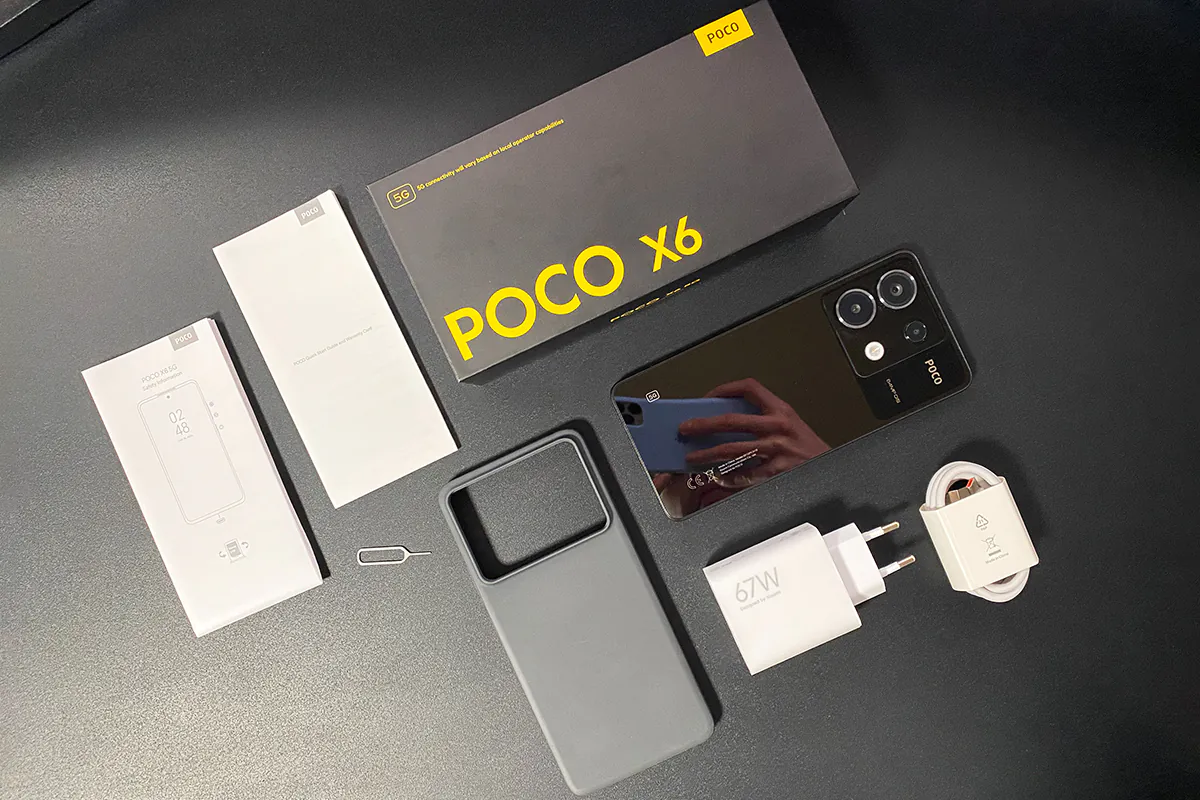 The display comes with a factory-installed screen protector — essentially, making it also part of the package. The included case deserves special attention. It’s not just a simple silicone case, but a branded one, with an original design and high-quality construction, made from a pleasant-to-touch material. However, the cutout for the cameras is too large, which is a minor downside (I’ll talk about it a bit later).
The display comes with a factory-installed screen protector — essentially, making it also part of the package. The included case deserves special attention. It’s not just a simple silicone case, but a branded one, with an original design and high-quality construction, made from a pleasant-to-touch material. However, the cutout for the cameras is too large, which is a minor downside (I’ll talk about it a bit later).
Design, ergonomics, build quality
Externally, the smartphone boasts a rather stylish appearance, even somewhat premium, I would say. Thin bezels, perfectly flat side edges, and a rear panel with a glass-like finish, rounded corners, and a neat camera module. Externally, the device resembles not so much its older sibling as the Redmi Note 13 Pro 5G. By the way, there are quite a few similarities between the POCO X6 5G and the Redmi Note 13 Pro 5G, and they are not only in terms of design. But I’ll talk about them during the review.
The smartphone is available in 3 colors: Black, White, and Blue. Unfortunately, the version in the signature yellow color with an eco-leather coating, as for the POCO X6 Pro 5G, is not provided for this model. I received the black version of the smartphone for review, so I will be showcasing it further in the review.
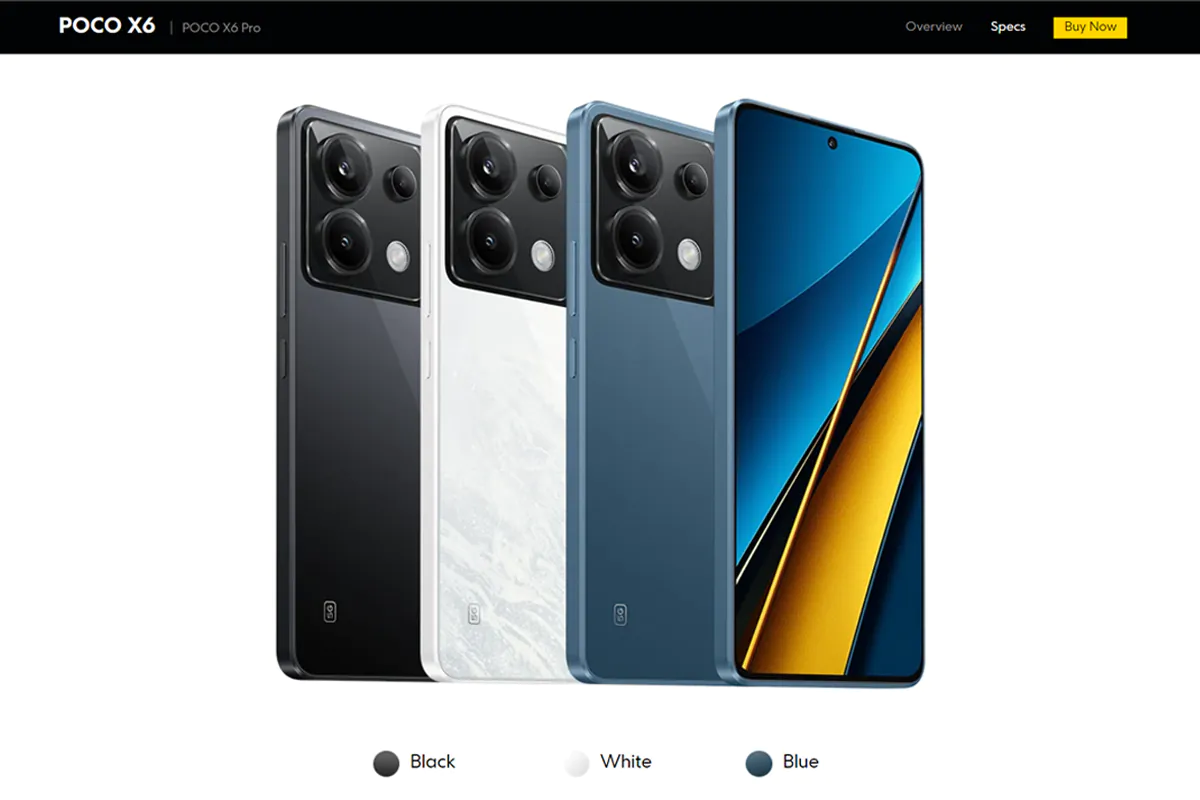 The entire front panel is occupied by a 6.67-inch AMOLED display. The bezels are very thin. At the top is the front island-type camera (a point in the display). A factory-installed protective film is applied to the display. The display itself is protected by Gorilla Glass Victus. By the way, the X6 Pro uses Gorilla Glass 5, which is considered slightly less resistant to scratches and damage than Victus.
The entire front panel is occupied by a 6.67-inch AMOLED display. The bezels are very thin. At the top is the front island-type camera (a point in the display). A factory-installed protective film is applied to the display. The display itself is protected by Gorilla Glass Victus. By the way, the X6 Pro uses Gorilla Glass 5, which is considered slightly less resistant to scratches and damage than Victus.
The rear panel is entirely glossy, made to resemble glass. From a visual standpoint, it’s quite attractive, giving the smartphone a stylish appearance.
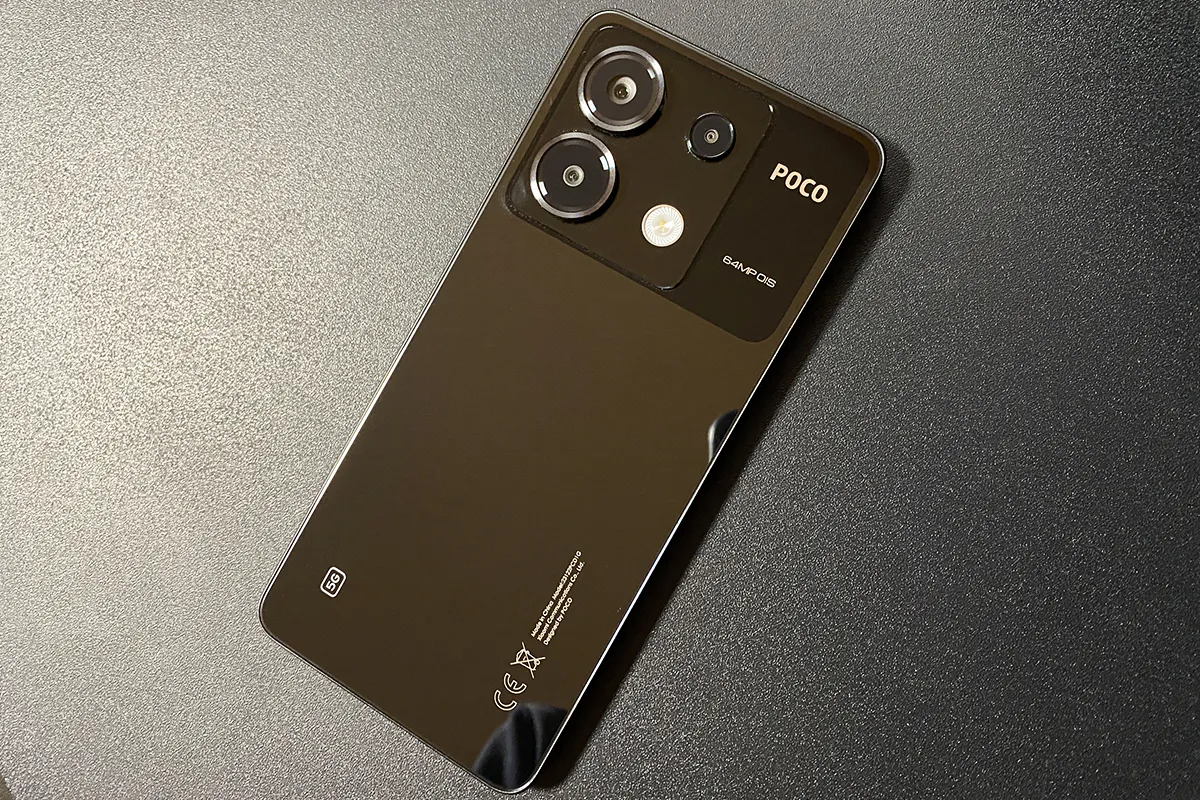 But from a practical standpoint, it’s a complete hassle. The “glass” surface attracts fingerprints, dust, and smudges very easily, making it practically impossible to keep the smartphone looking tidy without a case. Even with the included case, there’s a large cutout for the camera block, which continues to gather fingerprints and dust. Moreover, it’s not very convenient to clean, especially between the lenses.
But from a practical standpoint, it’s a complete hassle. The “glass” surface attracts fingerprints, dust, and smudges very easily, making it practically impossible to keep the smartphone looking tidy without a case. Even with the included case, there’s a large cutout for the camera block, which continues to gather fingerprints and dust. Moreover, it’s not very convenient to clean, especially between the lenses.
The camera block itself consists of three modules (main, wide-angle, macro) and a flash. The brand inscriptions “POCO” and “64MP OIS” are also present. I believe the large cutout in the case is intentionally made so as not to cover them, which I consider to be not a very wise decision.
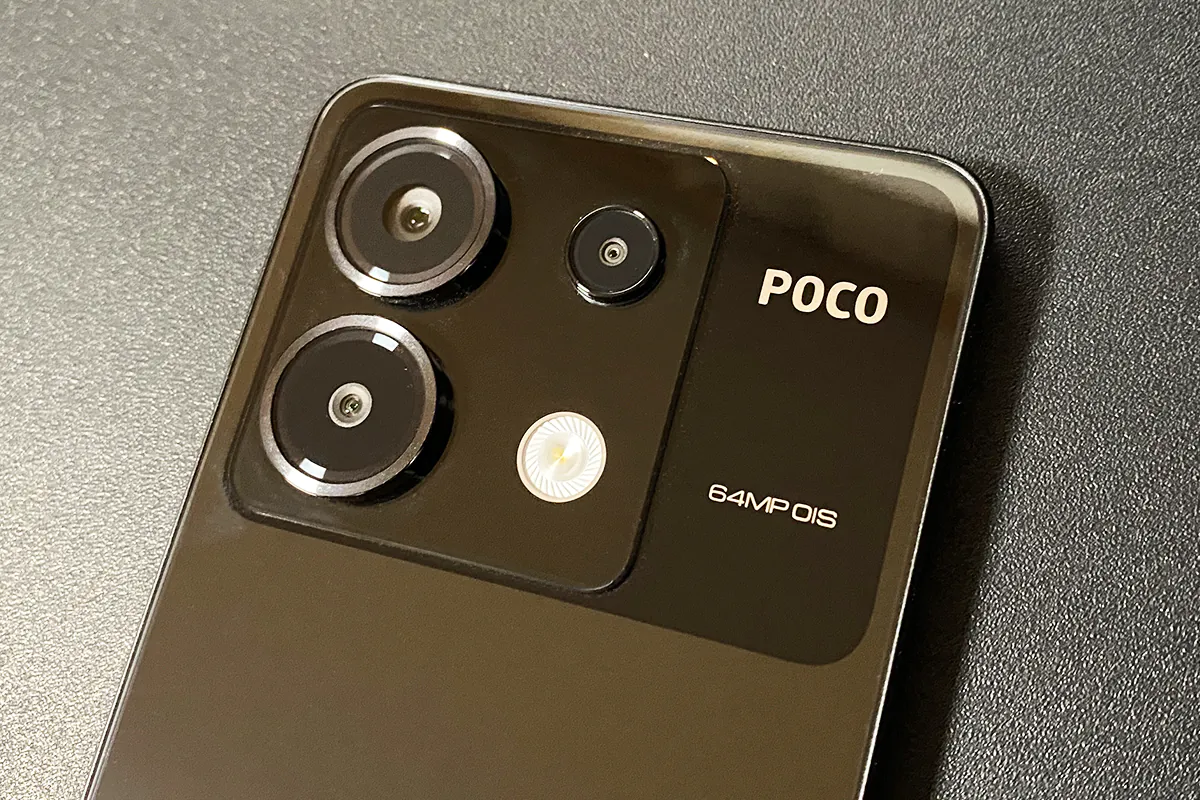 The side edges and rear panel are perfectly straight. The corners are rounded, just like in the majority of modern smartphones. The device itself is quite thin.
The side edges and rear panel are perfectly straight. The corners are rounded, just like in the majority of modern smartphones. The device itself is quite thin.
The placement of the elements is mostly standard, except for the SIM tray and the 3.5mm headphone jack. There’s nothing on the left side of the smartphone. On the right side, the volume controls and the power button are traditionally located.
On the top edge, there is a 3.5mm headphone jack, openings for the top speaker with a microphone and an IR port. On the bottom edge, we see the SIM card tray, a Type-C port, and openings for the bottom speaker.
The tray in the smartphone is double-sided — it can accommodate 2 nano-SIM cards. There is no support for microSD memory cards.
The dimensions of the smartphone are quite standard: 161.15 × 74.24 × 7.98 mm. The device weighs 181 g.
The body material is plastic. The build quality is excellent. The device is protected against dust, moisture, and splashes, with an IP54 protection rating. Another feature is the presence of a vibration motor, which provides pleasant tactile feedback in the form of vibration during certain actions. I can’t say that it’s very pronounced, but it’s there, and using the smartphone with it becomes slightly more pleasant.
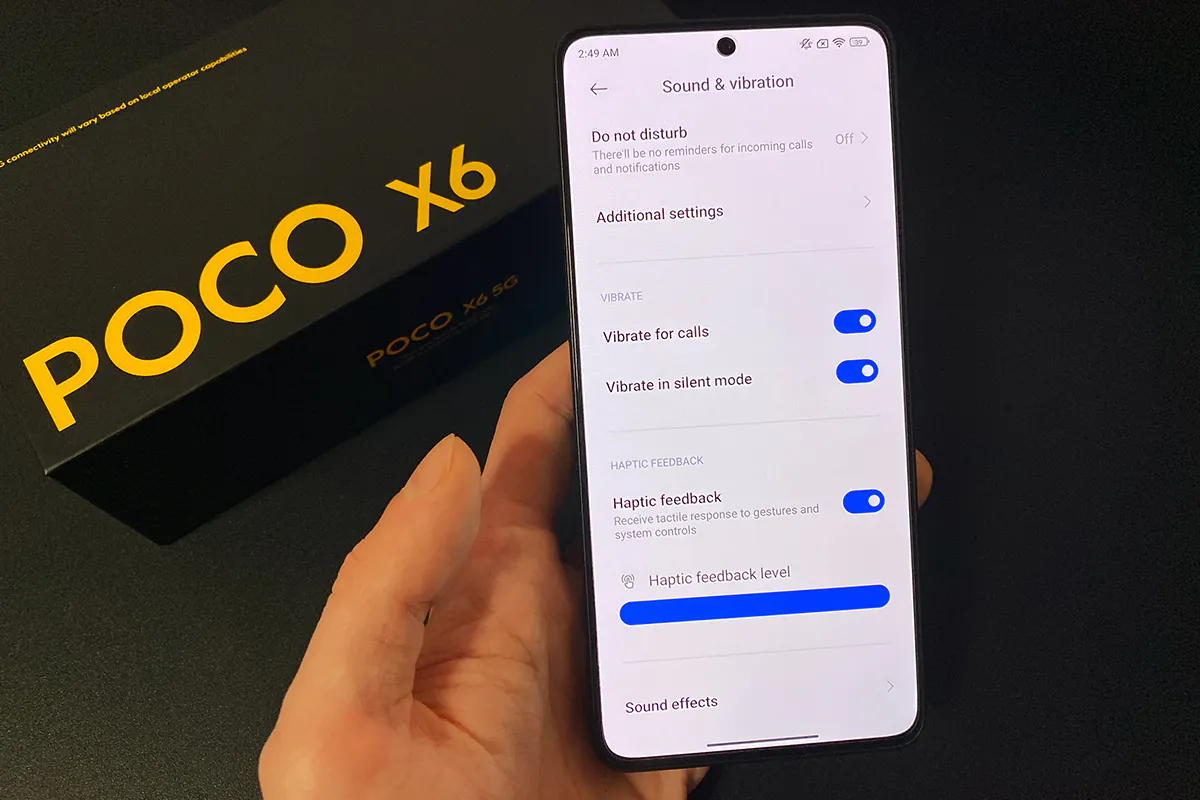 In terms of ergonomics, there are no particular complaints. The smartphone feels comfortable to hold, and adjusting the volume and power buttons is easily reachable with the thumb. Reaching the top area of the display is possible but requires a slight adjustment. Overall, the device is comfortable to use even with one hand. The only potential issue could be with the glossy material of the body, which is challenging to keep clean. This applies more to the black version of the smartphone. I believe the white and blue versions handle this aspect better, as these colors make smudges less noticeable.
In terms of ergonomics, there are no particular complaints. The smartphone feels comfortable to hold, and adjusting the volume and power buttons is easily reachable with the thumb. Reaching the top area of the display is possible but requires a slight adjustment. Overall, the device is comfortable to use even with one hand. The only potential issue could be with the glossy material of the body, which is challenging to keep clean. This applies more to the black version of the smartphone. I believe the white and blue versions handle this aspect better, as these colors make smudges less noticeable.
Read also:
- POCO X6 Pro smartphone review: It came to conquer… a niche
- POCO M6 Pro Review: Functionality For Decent Price
Display
The display on the POCO X6 5G, much like the Pro version, is excellent. The smartphone features a large 6.67-inch AMOLED display with a resolution of 2712×1220 pixels and a refresh rate of up to 120 Hz. It boasts a pixel density of 446 PPI. The claimed peak brightness is 1800 nits, and it supports HDR and Dolby Vision.
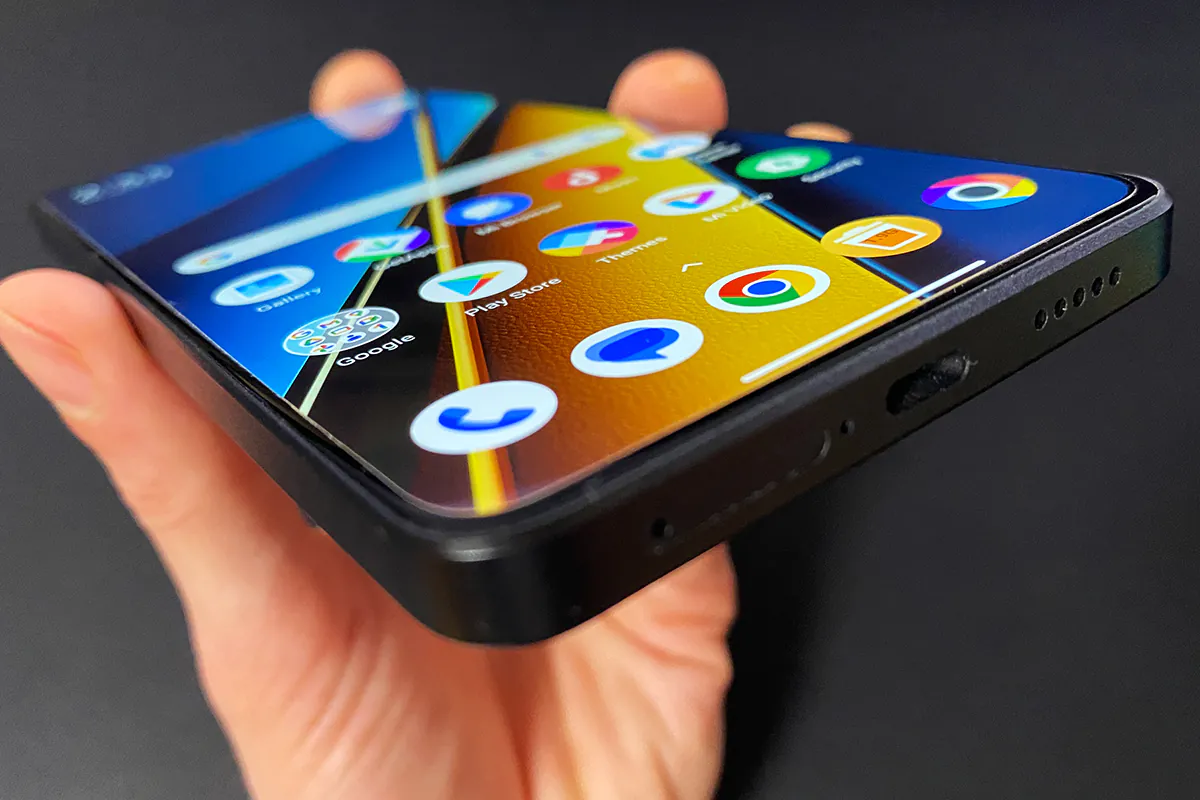 Color reproduction is excellent, with the display delivering bright and vibrant colors. Black color appears deep, and there are no issues with contrast. Overall, the display presents a fairly juicy picture with any content.
Color reproduction is excellent, with the display delivering bright and vibrant colors. Black color appears deep, and there are no issues with contrast. Overall, the display presents a fairly juicy picture with any content.
The viewing angles are exceptionally wide, ensuring that the display remains easily readable and visible from any angle. There are no noticeable changes in color or contrast when viewed from different angles.
There are no issues with image clarity. Text, video, graphics, and any other content all look excellent on the display.
Brightness is perfectly fine. The display is quite bright, and using the smartphone outdoors, even in sunny weather, is comfortable.
In terms of display performance, there’s nothing but praise. It’s fast, smooth, and highly responsive. It reacts promptly and accurately to all gestures. The touchscreen recognizes up to 10 simultaneous touches, which is more than enough not only for everyday tasks but also for dynamic mobile gaming.
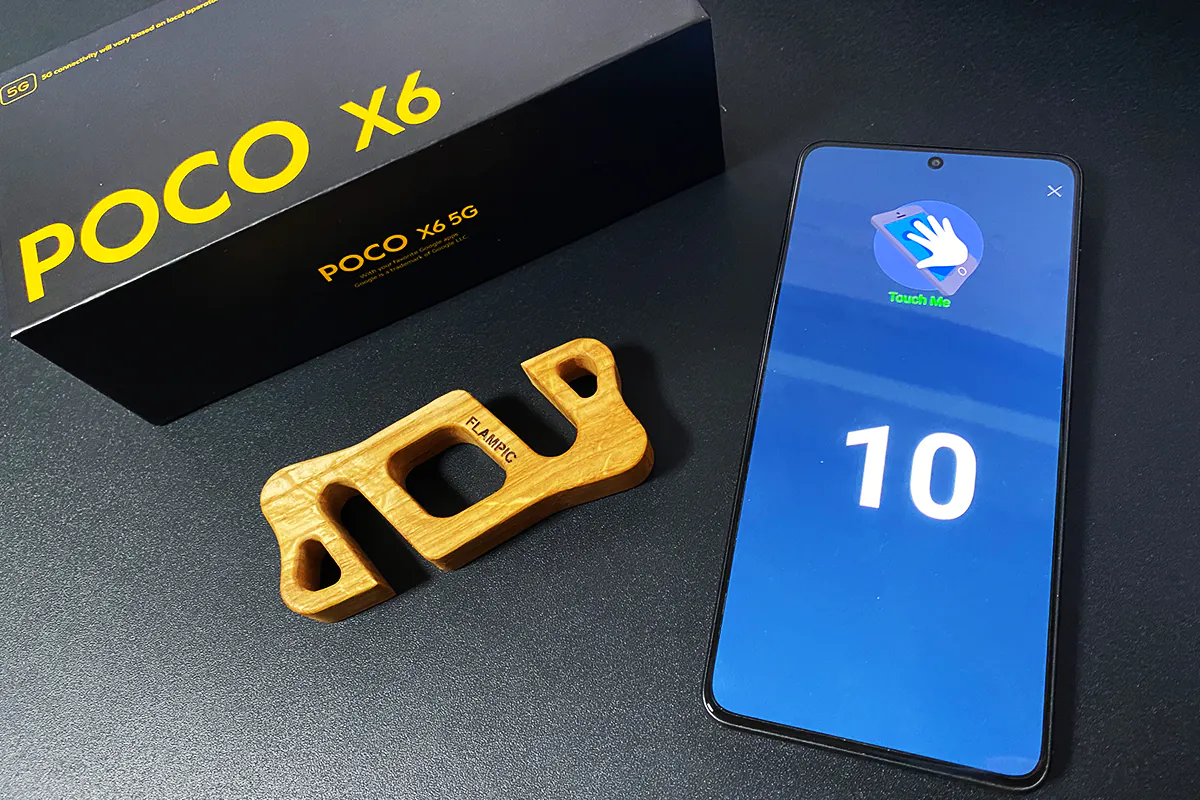 The display settings of the POCO X6 5G are similar to the Pro version. And by the way, they are exactly the same as those in the Redmi Note 13 Pro 5G. There are two refresh rate modes: standard (dynamic) and customizable (fixed at 60 or 120 Hz). I tested the smartphone in both modes and concluded that it’s fine to leave the refresh rate in the standard mode. Most of the time, the refresh rate is above 60 Hz, and everything feels very fast and smooth.
The display settings of the POCO X6 5G are similar to the Pro version. And by the way, they are exactly the same as those in the Redmi Note 13 Pro 5G. There are two refresh rate modes: standard (dynamic) and customizable (fixed at 60 or 120 Hz). I tested the smartphone in both modes and concluded that it’s fine to leave the refresh rate in the standard mode. Most of the time, the refresh rate is above 60 Hz, and everything feels very fast and smooth.
There are no differences in color reproduction settings either. There are 4 modes: bright, saturated, standard and enhanced. By default, the first mode is selected and I can say that it is quite enough for a juicy picture on the display. And for those who need more, there is an advanced mode. In this mode, you can customize the color palette, space, gamma, contrast, etc.
Among other features, the smartphone supports the Always On Display function, which allows displaying certain information on the screen even in sleep mode. For example, you can show the clock, text, or something personal on the display.
Brightness settings are standard. Only manual adjustment, automatic brightness, and daylight mode are available. When automatic brightness is enabled, the daylight mode becomes unavailable.
One interesting feature worth noting is the reading mode, which makes the display resemble an e-book. Additionally, the fingerprint scanner is built into the display, which can also read pulses.
As a conclusion, I can only reiterate what was already said at the beginning of this section: the display is fantastic. It’s one of the main advantages of the POCO X6 5G.
Equipment and performance
The POCO X6 5G runs on the Qualcomm Snapdragon 7s Gen 2 processor, an octa-core mid-range mobile chipset. It consists of 4 Cortex-A55 cores clocked at 1.95 GHz and 4 Cortex-A78 cores clocked at 2.4 GHz. The chipset is built on a 4nm process and handles graphics with the Adreno 710 GPU..
The smartphone comes with LPDDR4X RAM and UFS 2.2 storage. Depending on the configuration, there are three versions available: 8/256GB, 12/256GB, and 12/512GB. The model I reviewed has 8GB of RAM and 256GB of storage. The storage performs well both in visual experience and synthetic tests. Below are the storage tests results from AnTuTu and PCMark.
In the settings, there’s a function to extend the RAM using virtual memory, which utilizes space on the storage. Available options include 4, 6, or 8GB. By default, the setting is configured to 6GB, but since we have sufficient space on the storage, you can confidently set it to the maximum capacity.
When it comes to benchmarks, they show decent and quite expected results for this hardware. Below are detailed tests from the standard set: Geekbench 6, PCMark, 3DMark, AnTuTu Benchmark, AiTuTu Benchmark, and CPU Throttling Test. By the way, I observed similar results during testing of the Redmi Note 13 Pro 5G. But this is not surprising, as the internals of the smartphones are the same. In turn, the POCO X6 Pro, thanks to its more powerful hardware, delivers much higher results in these tests. You can check them out at the link provided.
Testing the performance, I also tried out the POCO X6 5G in games. And I can say that it handles them well. Games like Asphalt 9, Free Fire, PUBG, Real Racing 3, and Diablo Immortal run smoothly on the smartphone at maximum graphics settings. Even in more resource-intensive games like Genshin Impact, you can play at maximum settings. However, it’s worth noting that in some cases, the performance may slightly drop. For example, during battles with a lot of effects or in the city with sharp camera turns. Frame drops are minimal—they don’t significantly affect gameplay and completely disappear if you lower the settings to a high level.
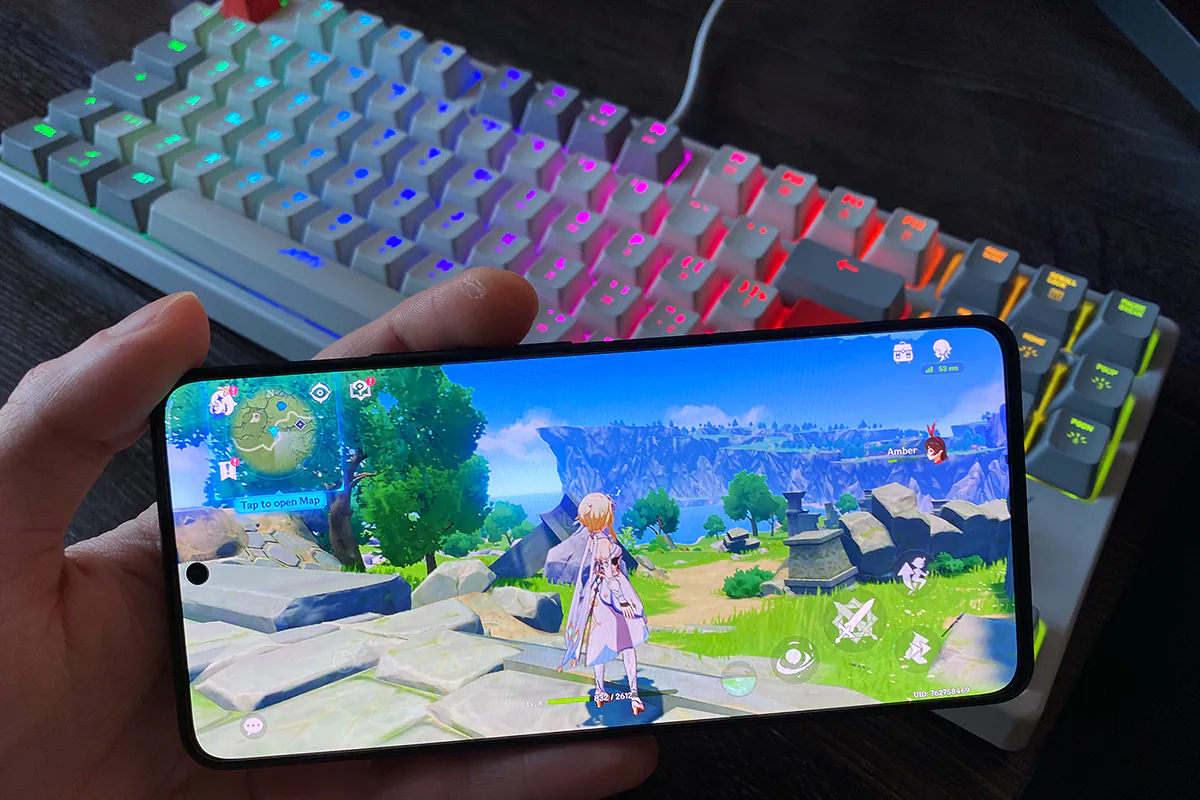 By the way, when you launch any installed game on the smartphone for the first time, the Game Turbo app will appear. With its help, you can optimize games and the system for gaming.
By the way, when you launch any installed game on the smartphone for the first time, the Game Turbo app will appear. With its help, you can optimize games and the system for gaming.
As for performance in regular everyday tasks, I can say that it’s more than sufficient. Navigating through the OS, adjusting settings, installing, launching, and using apps all happen without any issues. Everything is quick, smooth, without any lags or freezes. In terms of speed, using the smartphone is very comfortable.
Cameras
The cameras of the POCO X6 5G are almost the same as those in the Pro version. The rear camera consists of three lenses: the main, wide-angle, and macro. The main lens has a resolution of 64 MP with an aperture of f/1.79. The wide-angle lens is 8 MP with an aperture of f/2.2 and a 118° field of view. The macro lens is 2 MP with an aperture of f/2.4. The rear camera can record video in various resolutions: 4K@30FPS, 1080P@60/30FPS, and 720P@30FPS. There is stabilization, but it’s only available for 1080P resolution and at 30 frames per second.
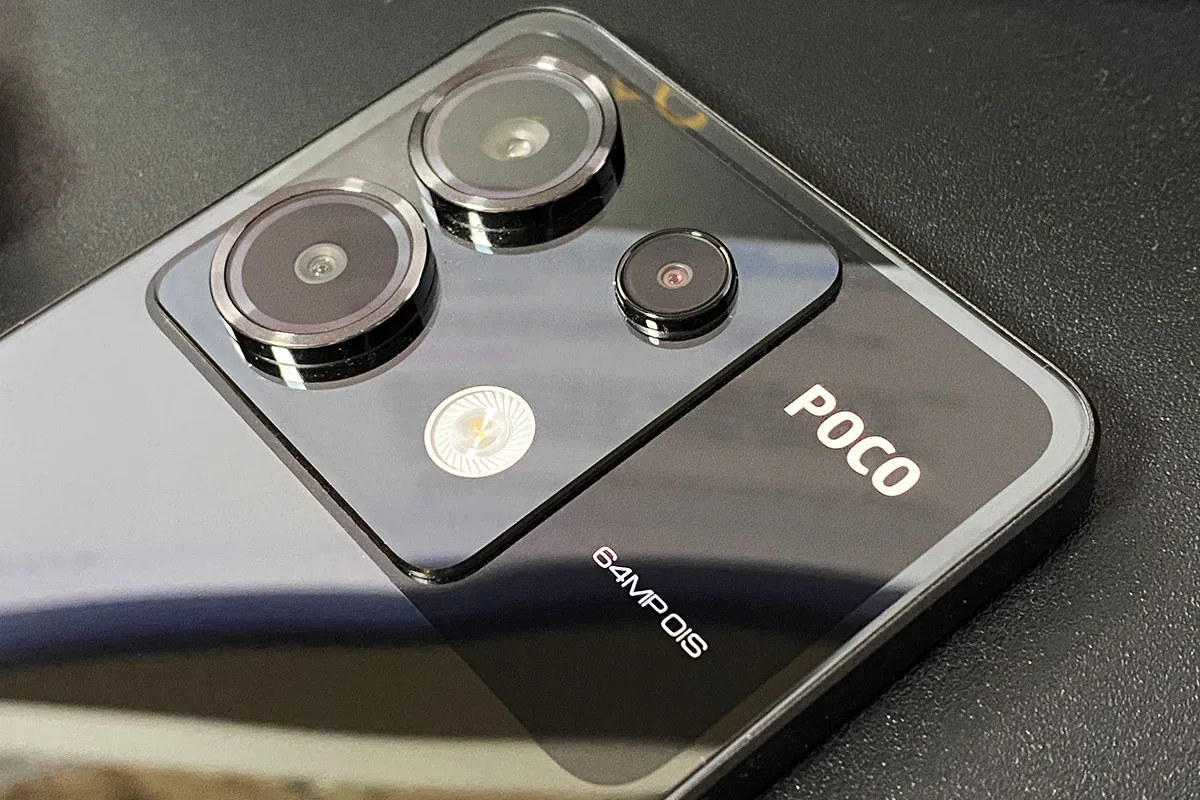
The front camera features a 16 MP resolution with an aperture of f/2.45. It can record video at 1080P resolution at both 60 and 30 frames per second.
Camera app
The camera app on the POCO X6 is the same as that on the POCO X6 Pro. And yes, it bears little difference from the application designed for the Redmi Note 13 series.
Available photo modes include: normal photo, macro, portrait, documents, pro mode, night mode, 64 MP photo, panorama, and long exposure mode.
The available video modes include: normal video, macro, slow-motion, time-lapse, and short film. The last mode allows you to shoot a short clip with pre-selected effects and music overlaid on it.
The camera supports HDR, which operates in automatic mode. The smartphone decides on its own when it’s best to use it. Based on my observations, I can say it works somewhat oddly. For instance, in identical conditions, it may or may not activate on the same frame. I noticed the same pattern during testing of smartphones from the Redmi Note 13 lineup.
In the additional settings, you can also find the AI camera function, which is supposed to automatically recognize scenes and optimize the camera for them. Honestly, I didn’t notice a big difference when activating it.
Another interesting feature is the auxiliary camera mode, which allows you to connect 2 devices and take pictures with simultaneous preview. It’s a convenient feature that can come in handy, for example, when you need to take pictures of yourself with the rear camera in portrait mode and no one is available to help. Or when you need to take a group photo and want everyone to be in the frame. The main requirement is to have a second POCO smartphone. Although I think the Redmi Note should work too, as they essentially have the same application.
For the front camera, the set of modes largely repeats itself. Modes for photos include regular photo, portrait, night mode, and panorama. Video modes include regular video and time-lapse. Additional camera and HDR modes for the front camera are also available.
The global settings for the camera application are standard. I will show everything that is available in the screenshots below.
The application works well. Modes switch quickly with swipes or by tapping on the name in the bottom row. I didn’t notice any bugs while using the application. Everything is clear and quite convenient. If necessary, you can customize everything to your liking, for example, rearrange the mode layout or hide those that are rarely used.
Photos and videos on the main camera
In good natural light, the POCO X6 5G camera takes good pictures. You can see good detail and color reproduction in the images.
In the 64 MP mode, the resolution of photos is increased. In the normal mode, photos have a resolution of 4624×3472 pixels. In the 64 MP mode, the resolution increases to 9248×6944. Among the advantages, I can note that photos in 64 MP preserve colors and original brightness. On some smartphones, I noticed that in high-resolution mode, frames lose brightness. There’s no such issue here.
In wide-angle mode, the photos come out decent, but only in good lighting. As can be seen from the examples provided, the quality and sharpness of the picture significantly decrease in the evening. Overall, there are some issues with evening shooting on the POCO X6 5G, but we’ll get to them later.
Photos taken with zoom generally look good. However, at maximum zoom, there’s noticeable loss of quality, but this is a typical scenario, so there’s no point in nitpicking. Also, evening zoom shots are not as high quality, but this is also quite expected.
To be frank, the macro capability is rather weak. Photos taken in macro mode lack detail, and you can also notice noise on them. Honestly, you can’t expect much from the 2 MP macro module.
The portrait mode performed well, even during evening shots. The camera effectively highlights the foreground and background, with clear contours. Color reproduction and shades are also good. Overall, I liked this mode.
Evening shots are mostly disappointing. There’s a noticeable drop in object detailing, and the frames appear blurry. Overall, you can take photos in the evening with the POCO X6 5G. However, to get somewhat decent shots, you’ll have to put in some effort.
The smartphone has a special night mode for evening shots. It adds brightness to the photos. However, the difference isn’t noticeable in all photos. In some cases, the frames in night mode come out exactly the same as without using it.
Video recording with the rear camera goes roughly the same way as with photos. During the day in good lighting, the camera captures well, especially in 1080P@60FPS. Stabilization is available only in 1080P@30FPS. But to be honest, there’s hardly any difference with it turned on, so you can confidently do without it.
Examples in 4K at 30 frames


Examples in 1080P at 60 frames


Examples in 1080P at 30 frames with stabilization enabled


During evening shooting, there’s a drop in detailing and the appearance of blurring. The optimal option for evening shooting is considered to be 1080P at 60 frames per second. With stabilization turned on, the video quality decreases significantly, and the effect of a floating image appears. Therefore, it’s better not to enable stabilization at all during evening shooting.
Example in 4K at 30 frames

Example in 1080P at 60 frames

Example in 1080P at 30 frames with stabilization enabled

In conclusion, I can say that the rear camera is generally good. But it could be better – I mean in the evening.
Photos and videos on the front camera
Photos on the front camera are not bad. The portrait mode is also mostly pleasing.
The video quality in daylight is quite good. Video stabilization is not provided for the front camera, and it’s actually not needed here.
Example in 1080P at 30 frames
Example in 1080P at 60 frames
With evening shooting, the front camera generally copes well, although the quality and detailing of the video understandably decrease. There’s also a difference in brightness. Video recorded at 1080P with 60 frames per second will be noticeably darker than at 30 frames per second. By the way, I observed a similar situation with varying brightness on smartphones from the Redmi Note 13 series.
Example in 1080P at 30 frames
Example in 1080P at 60 frames
Sound
Like in the Pro model, the POCO X6 5G features 2 stereo speakers and Dolby Atmos support. The sound quality is good, and the smartphone is quite loud. During music playback, you can even discern some bass. With the sound from the speakers, you can comfortably watch movies, play games, or have video calls. There’s an additional equalizer in the sound settings, which allows you to adjust the sound to your preferences.
For wired headsets, there’s a standard 3.5mm jack available. LDAC codec support is provided for wireless headsets. There are no complaints about the sound quality during phone calls. It’s loud, clear, overall excellent.

Read also:
- POCO M5s smartphone review: a clone, but a good one
- Samsung Galaxy S24 Ultra Review: Strengths of AI and a Flawed Zoom
- realme 12 Pro Review: All About the Cameras
Communications and wireless technologies
The POCO X6 supports the standard range of cellular networks, including 5G support. There’s no support for eSIM, just like in the Pro version. Honestly, the absence of eSIM was a bit surprising, considering it’s available in the Redmi Note 13 Pro 5G. Since the smartphones are quite similar in many aspects. As for the supported bands, here’s what we have:
- 2G GSM: 850/900/1800/1900MHz
- 3G WCDMA: B1/2/4/5/6/8/19
- 4G LTE FDD: B1/2/3/4/5/7/8/12/13/17/18/19/20/26/28/32/66
- 4G LTE TDD: B38/40/41
- 5G Sub6G: n1/3/5/7/8/20/28/38/40/41/66/77/78
While the smartphone was in my possession for testing, I used it as my primary device for calls and mobile internet. I tested the smartphone with two different SIM cards, and I didn’t encounter any problems. The signal and call quality were normal, and the mobile internet showed the usual connection speed.

For wireless connections, the smartphone utilizes Wi-Fi 5 (802.11 a/b/g/n/ac) and Bluetooth 5.2. NFC is available for contactless payments. The supported location services include GPS, GLONASS, Beidou, Galileo, and QZSS. I didn’t encounter any issues with wireless connections — everything works fine.
Software
In terms of software, the X6 version differs significantly from its higher model. The Pro version runs on Android 14 with the new HyperOS interface. Meanwhile, the POCO X6 5G operates on Android 13 with the MIUI 14 (for POCO) interface. The current version at the time of the review is 14.0.9.0. TNRMIXM.
The interface of the X6 5G is entirely identical to what we’ve seen in smartphones of the Redmi Note 13 series. I’ve already discussed it here. Among the differences that immediately caught the eye, I can only mention the changed appearance of the application icons (here they are round) and the menu with all installed applications, which is opened by swiping up. Otherwise, it’s the same MIUI 14 experience.
There are many pre-installed applications: Google apps, Xiaomi’s proprietary applications, third-party apps, various games. Unnecessary third-party apps and games can be easily removed from the smartphone, so I can’t say that they are heavily imposed on us.
In the review of MIUI 14 for Redmi Note, it was mentioned about intrusive notifications from proprietary applications, ads in the form of recommendations, and ads embedded in applications. So, based on my experience with the POCO X6 5G, it seems like none of these issues are present. Throughout the time I had the smartphone for testing, I didn’t notice anything like that. Well, except for occasional notifications from Google, like “install a few more of our apps.” Otherwise, it’s more or less clean. And the most interesting part is that I didn’t make any specific settings regarding this aspect with the smartphone beforehand.
The standard security methods (unlocking) include: pattern lock, PIN code, password, Bluetooth, fingerprint, and face unlock. By the way, unlocking using fingerprint and face recognition works accurately and quickly.
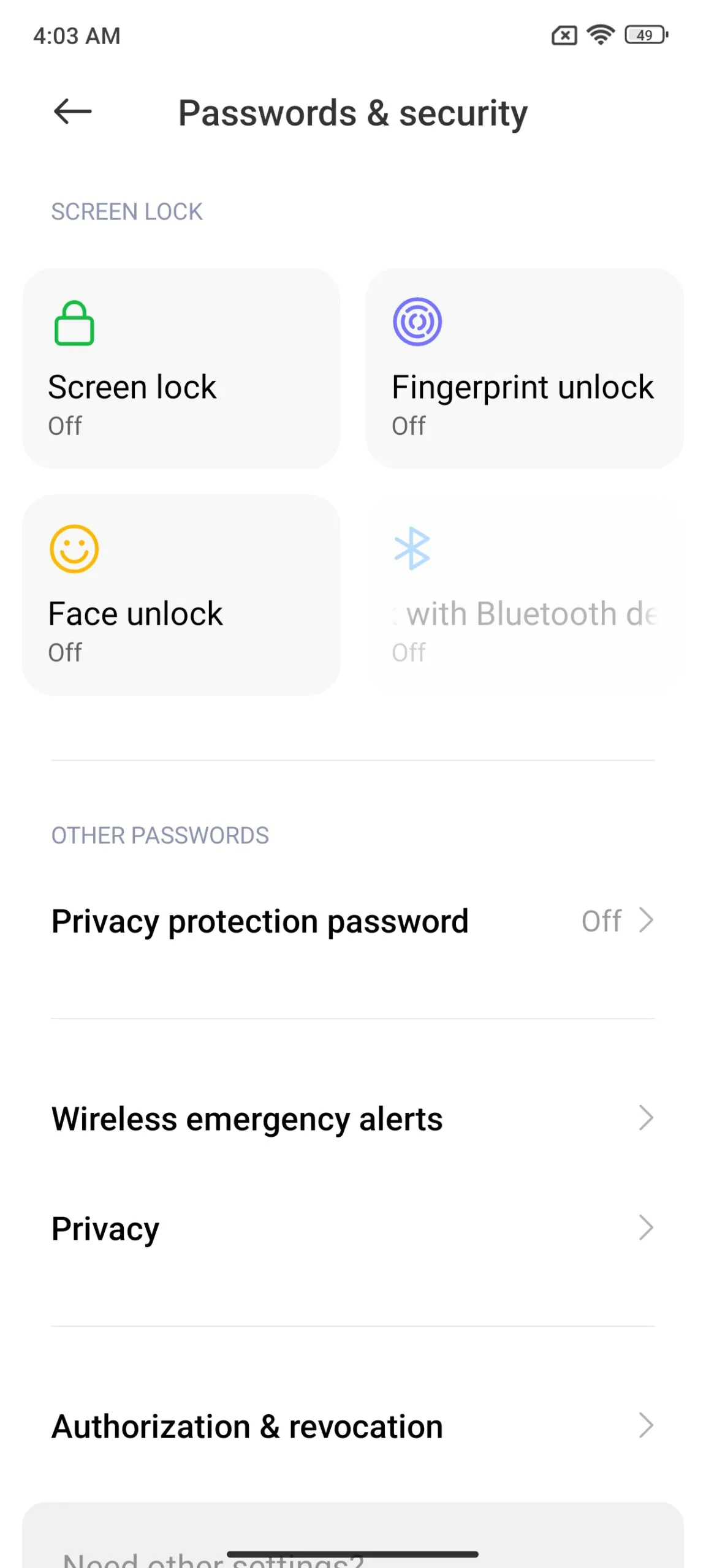
In principle, there’s not much more to say about the operating system. It’s the same familiar MIUI. It runs smoothly, without any bugs. It looks attractive and is intuitive to use. It’s easy to customize to your preferences. You don’t have to worry about future updates, which is also a significant advantage.
Battery life
The smartphone is equipped with a 5100 mAh battery, which is a standard capacity by today’s standards. The included charger has a maximum power of 67 watts.
With the included charger, the smartphone charges from 5% to 50% in approximately 19 minutes. A full charge to 100% takes 45 minutes.
The battery settings also seemed familiar to me — I’ve seen similar ones in smartphones from the Redmi Note 13 series. There are four battery modes available: balanced (selected by default), power-saving, ultra-power-saving, and performance mode. There are also battery protection features such as optimizing charging during nighttime. In the additional features, you can find options like fast charging acceleration and other useful settings.
I conducted battery life testing using the built-in Work 3.0 Battery Life test from the PCMark app. It showed a result of 11 hours and 20 minutes. Interestingly, the result is almost the same as the Pro version (11 hours 46 minutes). However, when comparing the POCO X6 5G with its counterpart, the Redmi Note 13 Pro 5G, the latter has a significantly shorter battery life — 9 hours and 59 minutes.
The battery life test was conducted with the following settings on the smartphone: balanced battery mode (set by default), brightness level at around 75% (manually adjusted), and standard (dynamic) screen refresh rate. With regular daily use, the battery easily lasts 1.5 to 2 days on a full charge, depending on usage intensity.
Conclusions
In conclusion, I can say that the POCO X6 5G is a great smartphone for its price segment. It boasts a fantastic AMOLED display, excellent performance, high battery life, and an affordable price tag. Among the contentious points, I can only mention the glossy body, which is challenging to keep clean. However, if you think about it, this issue is more relevant to the black version of the smartphone. With the white and blue versions, there should be fewer problems in this regard. Another contentious point is the cameras. Overall, the cameras of the POCO X6 5G capture decent photos and videos. Decent, but honestly, it could be better, especially in terms of low-light photo and video quality. In all other aspects, the POCO X6 5G is solid. It’s so good that it has the potential to become a favorite among users and a bestseller.

Read alsо:
- OPPO Enco Air3 Pro Review: Mid-budget TWS Earbuds with Premium Sound
- Top 5 Most Modern Nuclear Submarines
- Redmi Note 13 and Note 13 5G Smartphones Review


